Recording activity
There is little information on the making of recordings and the use of the phonograph in Seligmann’s journals and publications. The phonograph is mentioned once in The Melanesians of British New Guinea, when Seligmann noted that the shyness that prevented the collecting of songs in Wagawaga disappeared when “the men who were considered the best singers” were taken to the schooner to perform (Seligmann 1910:586). However, whilst he did not mention the phonograph or recording, a number of songs were transcribed and translated, many of which correspond to the cylinder recordings. There are only three mentions of recording activity, and four other mentions of the phonograph or cylinders in Seligmann’s journal.
To facilitate analysis, we have organised the recordings into groups by the chronology of the recording events, as far as we know. We added information from published and archival sources to the information from both the recordings and the cylinder boxes themselves. The announcements in English at the start of 37 of the 40 cylinders record varying amounts of information, including the title, the performer or performers, the place and date of recording, and some linguistic and cultural information. It is evident from the cylinder information that there were numerous recording events not recorded by Seligmann in his journal. All of this information is in the metadata below.
The first mention of the phonograph is from 31 December 1903, when Seligmann noted that Dunning had “found kinematograph & phonograph & cylinders but no spare parts” (Seligmann 1903-1904:22). This entry indicates that Dunning may have been in charge of the phonograph and sound recording, as well as photographic work and recording using the cinematograph.
Research by Vicky Barnecutt, British Library, and Don Niles, IPNGS.
Motu/Koita (near Port Moresby)
The first note of recording is from the morning of 5 January 1904, in Port Moresby, when Seligmann noted that “Dunning & Barton worked the phonograph on lakatoi songs” (Seligmann 1903-1904:24). They discovered that they only had five spare cylinders, and would have to shave some others to have enough “for the lakatoi songs & perhaps for the funeral dirge EHONA E KUREA LAO so shall not take phonograph west” (Seligmann 1903-1904:24). This explains why there are no recordings from their trip to Western Province. They must have let Daniels know about the shortage of cylinders as he sent them some by post that they received on 4 February whilst at Daru (Seligmann 1903-1904:50). Whilst Seligmann and other researchers wrote lakatoi, the contemporary spelling in Motu is lagatoi so we have used this where possible (cf Groves 1972:523).
There are transcriptions of these three recordings in Barton’s chapter on lagatoi in The Melanesians (Barton 1910:116-118). Lagatoi are the double-hulled sailing canoes used in the hiri, the annual trading expedition that Motu/Koita people took to the Papuan Gulf. Seligmann defined ehona as “Lakatoi songs, learnt from the Motu by the Koita, sung on lakatoi, also sung by the Motu as dirges… these songs have been borrowed by the Koita and are only sung by them in connection with the hiri, the annual trading journey to the Papuan Gulf…” (Seligmann 1910:152). Don Niles notes that ehona is “a very important, distinctive genre… songs sung by men during hiri expeditions. Instead of a gaba ‘drum’, they are accompanied by the sede, an instrument made from a bamboo with a tongue cut out of it; the tongue is hit with a stick. Ehona are also performed at funerals, as Barton notes; one writer noted that they are performed at times of danger or grief, when men are facing death or have just met it” (Don Niles pers. comm.)
These three cylinders, C62/1438 Bogi Bada, C62/1439 Kaime Gore, and C62/1426 (Solo) Kaime-Gore A.H.D. probably contain the recordings made by Dunning and Barton on 5 January. They are the only cylinders that do not have an English voice announcement at the start of the recording. The initials AHD on the lid of C62/1426 indicate that it was recorded by Arthur Henry Dunning.
For C62/1438 Bogi Bada,1IPNGS has a recording of this ehona from the late 1970s. Barton noted that bogebada was the Motu word for fish-hawk, and a commonly used name for a lagatoi (Barton 1910:104, fn 1).
“Bogebada o viria nanaia
Ario visuaia o veri auko
Boebada e laloi nanaia
Irope umanaia ola Dauke.
Ario visiua o vert au ko
Ela lao nau a uro diaimu
Iru ovo e no iru ovo.
Maino ava ori ovo
Nadori eva bodomu
Irope uma naia ola Dauko.
Ela lao nace a uro diaimu
Iro evo e no iru ovo
Maino ava ori ovo
Nadori ava e bodomu.”
Barton also noted that “Here and there a definite modern word occurs, such as nau and uro. It appears as though the lakatoi ‘Bogebada’ were being addressed and told to go in the direction of a village called Anal or Hanai, on the island of Daugo off Port Moresby” (Barton 1910:116).2Don Niles notes that in general the texts of hiri songs and many other songs cannot be translated today either. But whether this is because the language is archaic, the songs are borrowed, or for some other reason is unclear.
With reference to C62/1439 Kaime Gore, and C62/1426 (Solo) Kaime-Gore A.H.D., Kaimegore was the name of a man who sailed in a lagatoi. It is not clear whether this is the song recorded on the cylinder.
III.
“Kaimegore lalodia Ido
Ido ai ena pale aunakoia
Boi ka oini aoma oini kuro
Ne raro ido do binaia doka
Ido at e ena nale e aunakoi
Omoi ka asi nai ba rabara.”
The song is described by Barton in the following excerpt taken from Barton, F. B. 1910, ‘The Annual Trading Expedition to the Papuan Gulf’ in C. G. Seligmann The Melanesians of British New Guinea, Cambridge University Press, p. 117.
“This song is associated with a certain lakatoi legend telling how two men named Kaimegore and Idogore went respectively as baditauna and doritauna3Baditauna and doritauna are “one of the captains of a lakatoi (Motu)” (Seligmann 1910:747, 748). There is more information about hiri voyages, including these roles, in Groves (1972:523-527).of a lakatoi named Bogebada of Boera. They quarrelled about an asi when waiting at the Gulf village, and the result was a split. One took six of the asi and the other six, and each made his own lakatoi. Idogore reached home but the lakatoi belonging to Kaimegore when close to home, disappeared over the horizon, and those aboard it were never seen again. In this song it is almost impossible to follow the meaning. Idogore is apparently called ‘Ido’ in the song.”
Francis Rickman Barton (1910:117).
| British Library shelfmark | Recording title | Performer name | Recording location | Recording date | Content description | Performer description | Recording notes | Languages | Genre | Recordist | Recording length | Recording trip | Description of cylinder | Collection title | Cylinder location | Images of cylinder containers / documentation | Related print publication: | Related print publication: | Related print publication: | Related print publication: | Related print publication: | Related print publication: |
|---|---|---|---|---|---|---|---|---|---|---|---|---|---|---|---|---|---|---|---|---|---|---|
| C62/1426 | (Solo) Kaime – Gore. A.H.D | Unidentified (singer, male) | Port Moresby, British New Guinea | 5 January 1904 ? | 1. Male vocal solo, accompanied by percussion. This is probably a historical ehona song concerning Kaimegore, a man who sailed a lakatoi canoe as part of the hiri trading voyage. | Good quality recording. | Motu and/or Koitabu | Field recordings; Trading song; Voyaging song | Seligman, Charles Gabriel | 2'11" | Daniels Ethnographical Expedition to New Guinea 1904 | Brown wax cylinder | Daniels Ethnographical Expedition to New Guinea 1904 Cylinder Collection (C62) | British Library | 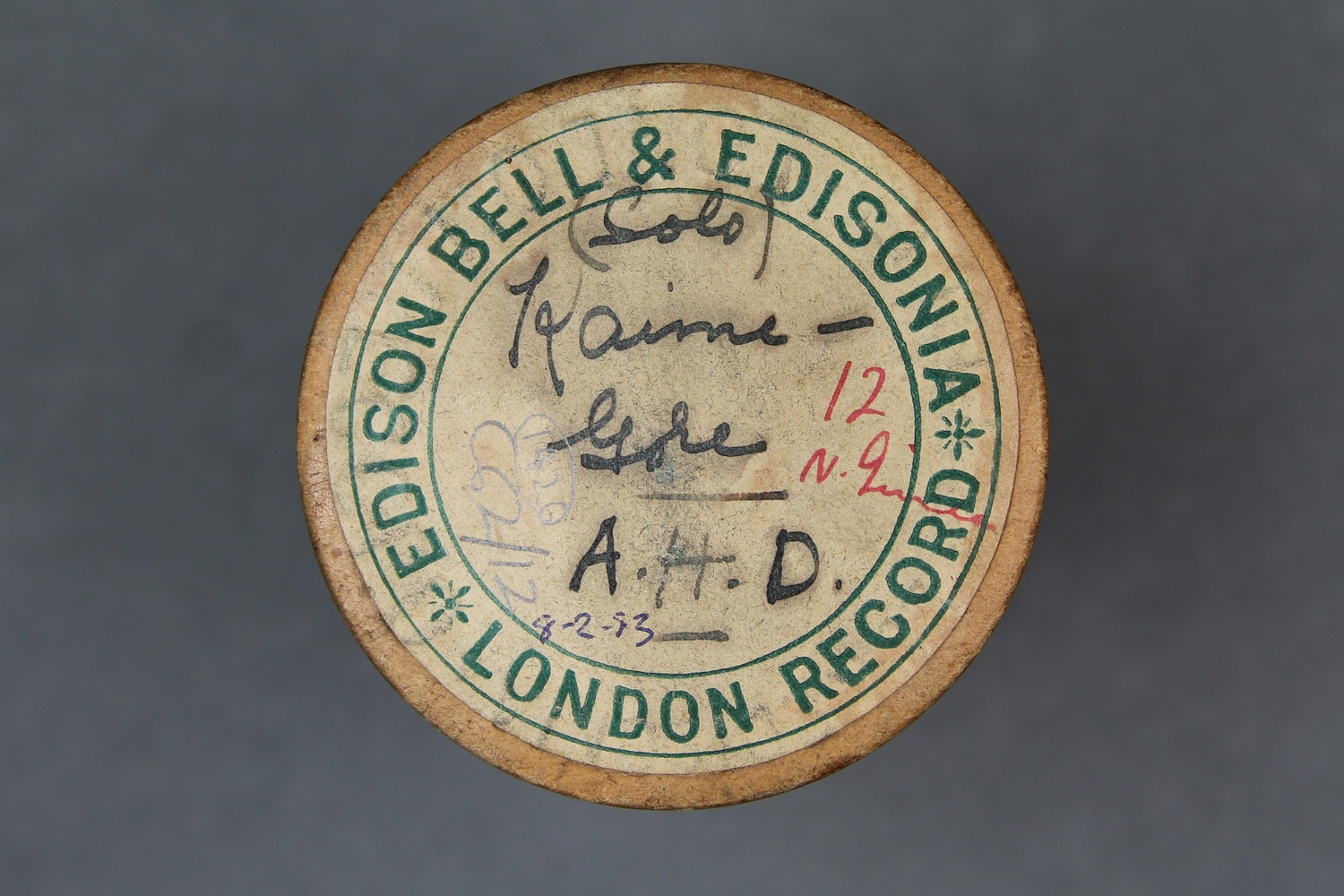      | Transcription of song in F. R. Barton's chapter in Charles Seligmann 'The Melanesians of British New Guinea', Cambridge Universtiy Press, 1910:117. | ||||||
| C62/1438 | Bogi Bada | Unidentified (singer, male); unidentified (percussion) | Port Moresby, British New Guinea | 5 January 1904 | 1. Unaccompanied male vocal solo. 2. Male vocal solo with percussion accompaniment. This is a historical ehona song concerning a lakatoi canoe trip as part of the hiri trading voyage. | Reasonable quality recording but with surface noise. | Motu | Field recordings; Trading song; Voyaging song | Seligman, Charles Gabriel | 2'36" | Daniels Ethnographical Expedition to New Guinea 1904 | Brown wax cylinder | Daniels Ethnographical Expedition to New Guinea 1904 Cylinder Collection (C62) | British Library | 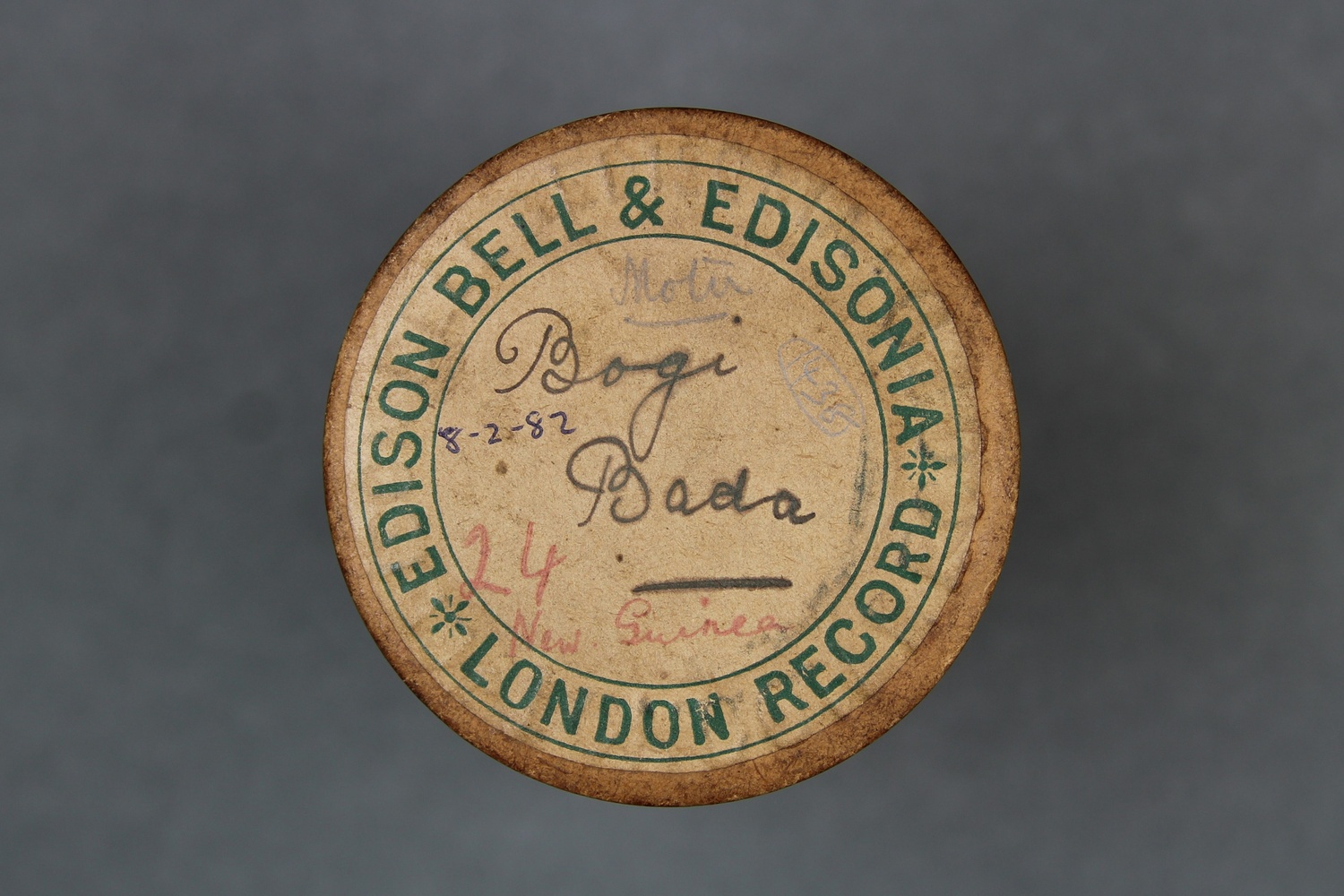      | Transcription of song in F. R. Barton's chapter in Charles Seligmann 'The Melanesians of British New Guinea', Cambridge Universtiy Press, 1910:116. | ||||||
| C62/1439 | Kaime Gore / Gaigo Lelova | Unidentified (male chorus); unidentified (percussion) | Port Moresby, British New Guinea | 5 January 1904 | 1-2. Male vocal group accompanied by percussion. This is probably a historical ehona song concerning Kaimegore, a man who sailed a lakatoi canoe as part of the hiri trading voyage. | Reasonable quality recording but with some surface noise. | Motu and/or Koitabu | Field recordings | Seligman, Charles Gabriel | 2'34" | Daniels Ethnographical Expedition to New Guinea 1904 | Brown wax cylinder | Daniels Ethnographical Expedition to New Guinea 1904 Cylinder Collection (C62) | British Library | 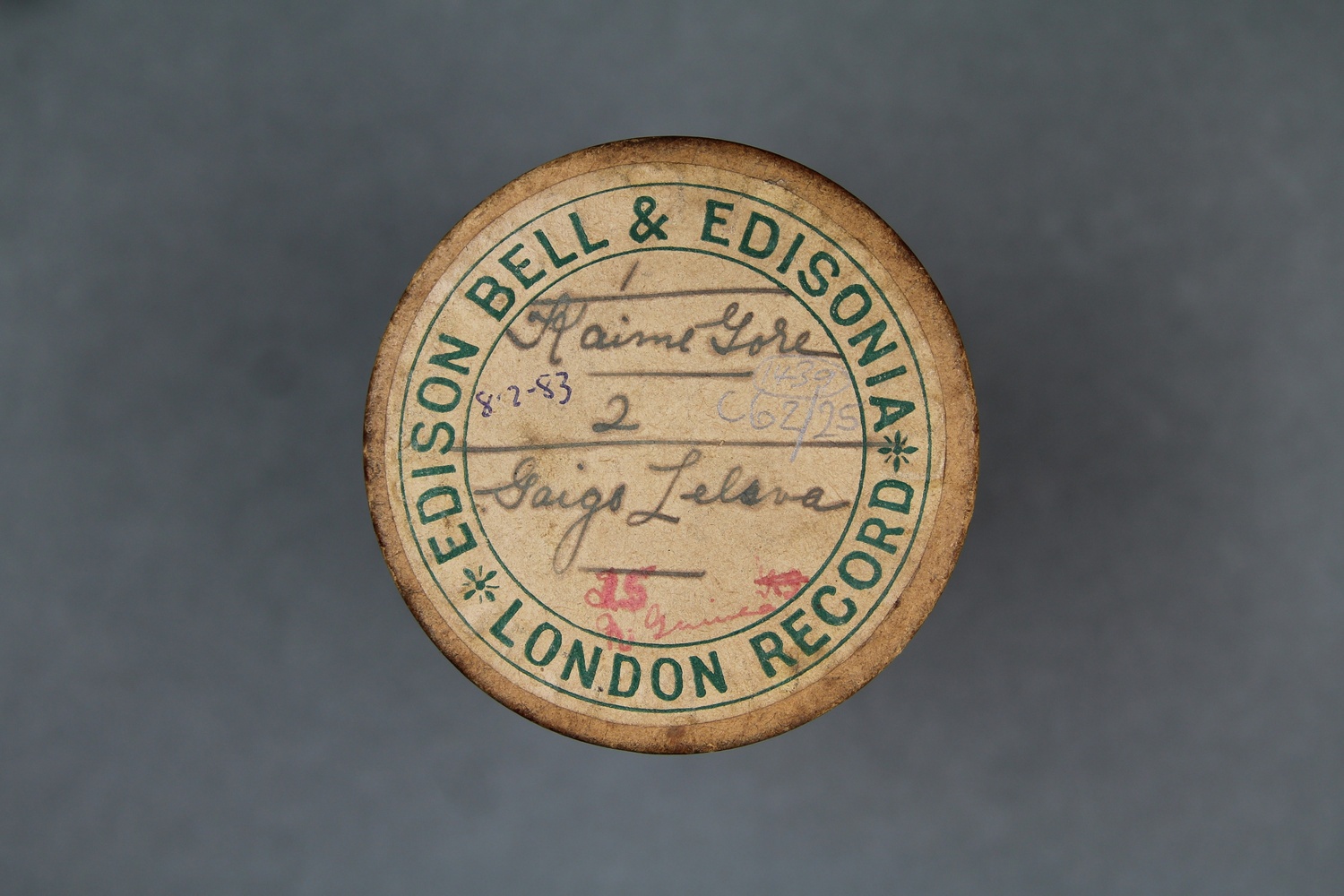      | Transcription of song in F. R. Barton's chapter in Charles Seligmann 'The Melanesians of British New Guinea', Cambridge Universtiy Press, 1910:117. |
Rigo District, Central Province (south of Port Moresby)
Rigo is mentioned in either the title or announcement of eleven cylinders. As the expedition only visited Rigo once, from 8 to 13 July, it is likely that they were all recorded then. July 1904 is noted in the announcements of four cylinders (C62/1427, C62/1432, C62/1434, C62/1435). The other seven have no month noted (C62/1428, C62/1429, C62/1430, C62/1431, C62/1433, C62/1436, C62/1442). The announcements on the cylinders mention the names and villages of some of the performers.
The titles of these cylinders indicate that they were recorded in a sequence, from 1. Mada Rigo; 3. Kebene Rigo; 4. Waula Rigo; 5. Enaniori Rigo; 6. Meori Rigo; 7. Gomi Rigo; 9. Waula (Siromuka) Rigo; 11. Leku Leku Part 1. There are three without numbers, presumably these fill the gaps of 2, 8 and 10. Two of the words in these titles are mentioned in Seligmann’s publications. Mada, is noted as the name of a Koita song and dance (1910:155, 751), and konedoi is noted as a Motu and Koita song and dance (Seligmann 1910:147, 152, 751). Additionally, Waula may be related to vaura, which is noted as Motu and Koita dance and song (1910:147, 152, 754).
The second mention of recording activity in Seligmann’s journal was on 11 July 1904, at English’s home at the Rigo government station. He noted:
“in afternoon taking phonograph records c̅4Seligmann used c̅ (‘c with an overbar’) frequently in his journal; it is medical shorthand for the Latin cum, meaning ‘with’. Dunning – about the most interesting of these was the Sinaugolo song ENANIORI – meaning of words quite forgotten – but said to be their oldest song & in their possession when with one dubu post they first emerged from their ancestral hole on TABEROGORO. Unlike most songs it begins with a rapid patter of drum beats the drum being held low & horizontal. Most of the men had to scrape their feet on the ground, so that presently a small hollow was digged [sic] before machine”
(Seligmann 1903-1904:110).
This is the only reference in the journal to an identifiable cylinder: C62/1436 5. Enaniori Rigo.
Taberogoro is also mentioned in the announcements of the recordings on C62/1432 and C62/1442. Seligmann noted that “the powerful and numerous Sinaugolo” people “originally came from the neighbourhood of Taberogoro close to Mount Giles” (Seligmann 1902:297). Taberogoro and Mount Giles are noted in Haddon’s map of the Rigo District (see map below, Haddon 1900:285) and Taberogoro is noted as a mountain in a sketch map by Seligmann (see map below, Seligmann 1909:325). It is not clear what Mount Giles is known as today, or whether Taberogoro is still recognised as the name of a mountain or a place. The performer, “Warina Koro [?], a native of Taborogoro” is noted in the announcement for C62/1432 1. Mada Rigo. This is the only time an individual performer is named in these Rigo cylinders.
Mount Obree, mentioned in the announcement of C62/1428, is in the Owen Stanley Range, and known as Suwemalla. It is recorded in a sketch map by Seligmann (see map below, Seligmann 1909:325).
Kwaipo, mentioned in the announcement of C62/1430, presumably refers to people from the village of Kwaibo itself or who speak the Kwaibo dialect of the Sinagoro language. The village is in Rigo District, about 20 kilometres north-east of Hula, and about 30 km south-east of Rigo (see map below, Dutton 1970:895).
| British Library shelfmark | Recording title | Performer name | Recording location | Recording date | Content description | Performer description | Recording notes | Languages | Genre | Recordist | Recording length | Recording trip | Description of cylinder | Collection title | Cylinder location | Images of cylinder containers / documentation | Related print publication: | Related print publication: | Related print publication: | Related print publication: | Related print publication: | Related print publication: |
|---|---|---|---|---|---|---|---|---|---|---|---|---|---|---|---|---|---|---|---|---|---|---|
| C62/1427 | Kornedoi Rigo | Unidentified (male chorus); unidentified (percussion) | Rigo, Central District, British New Guinea | July 1904 | Announcement: "Kornedoi, a koyori dance, adapted and used by the Garia. Sung by the Garia, at Rigo, July 1904." 2. Male vocal group with percussion accompaniment. | Good quality recording. | Uare. Garihe (Garia dialect); language also known as Kwale. | Field recordings | Seligman, Charles Gabriel | 2'33" | Daniels Ethnographical Expedition to New Guinea 1904 | Brown wax cylinder | Daniels Ethnographical Expedition to New Guinea 1904 Cylinder Collection (C62) | British Library | 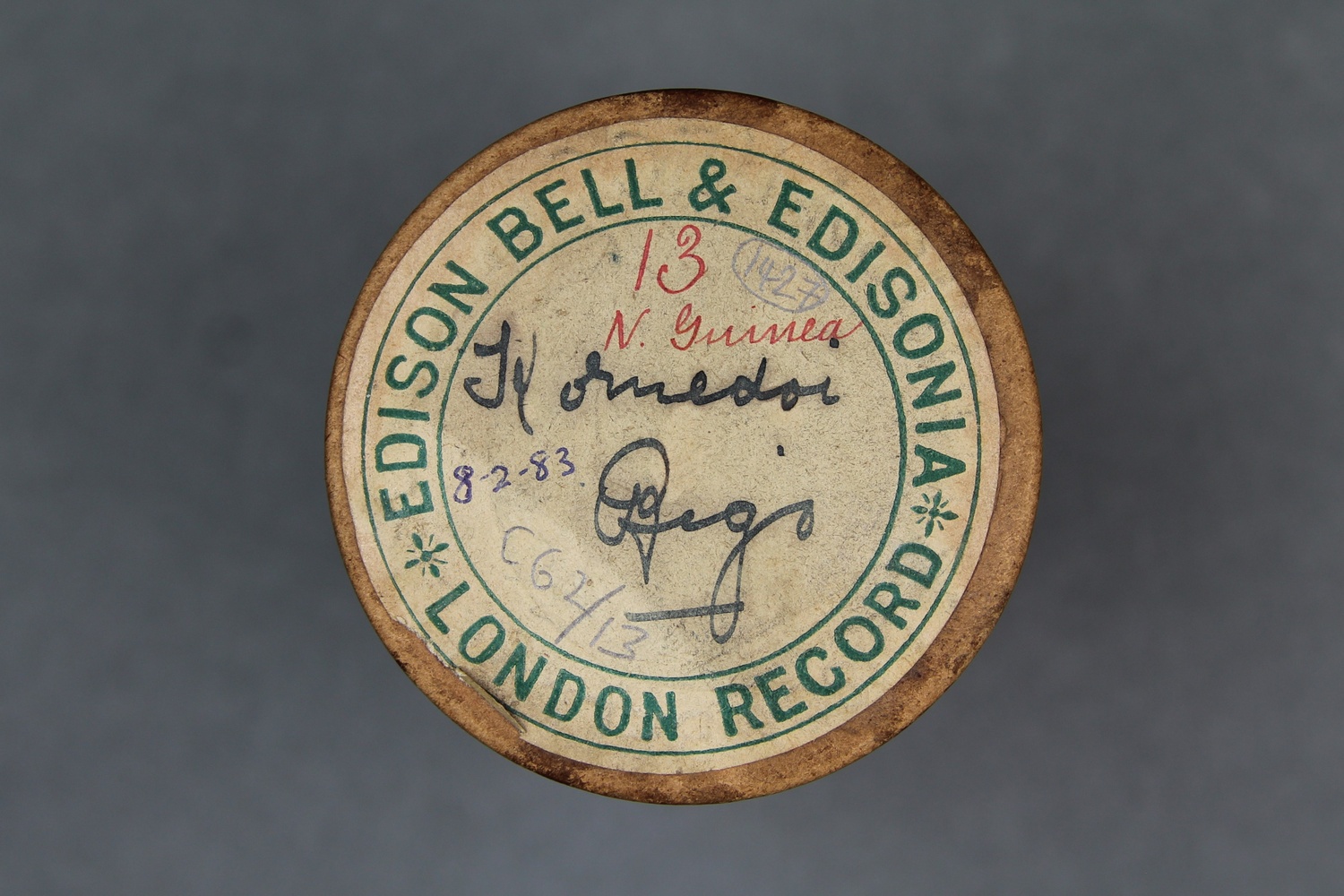      | |||||||
| C62/1428 | 6 Meori Rigo | Unidentified (male chorus); unidentified (singer, male); unidentified (percussion) | Rigo, Central District, British New Guinea | July 1904 | 1. Announcement: "[indecipherable], a kokila dance, sung by the natives at the foot of Mount Obree, Rigo District, British New Guinea." 2. Male vocal solo, accompanied by vocal group and percussion. | Good quality recording. | Doromu-Koki. Kokila dialect. | Field recordings | Seligman, Charles Gabriel | 2'49" | Daniels Ethnographical Expedition to New Guinea 1904 | Brown wax cylinder | Daniels Ethnographical Expedition to New Guinea 1904 Cylinder Collection (C62) | British Library |       | |||||||
| C62/1429 | Leku Leku Part 2 | Unidentified (male chorus); unidentified (percussion) | Rigo, Central District, British New Guinea | July 1904 | This cylinder continues on from cylinder no.11 (C62/1430). 1. Announcement: "... in honour of [indecipherable] after Kokila, Part 2. " 2. Vocal group accompanied by percussion. | Good quality recording. | Sinaugoro (?) | Field recordings | Seligman, Charles Gabriel | 2'39" | Daniels Ethnographical Expedition to New Guinea 1904 | Brown wax cylinder | Daniels Ethnographical Expedition to New Guinea 1904 Cylinder Collection (C62) | British Library | 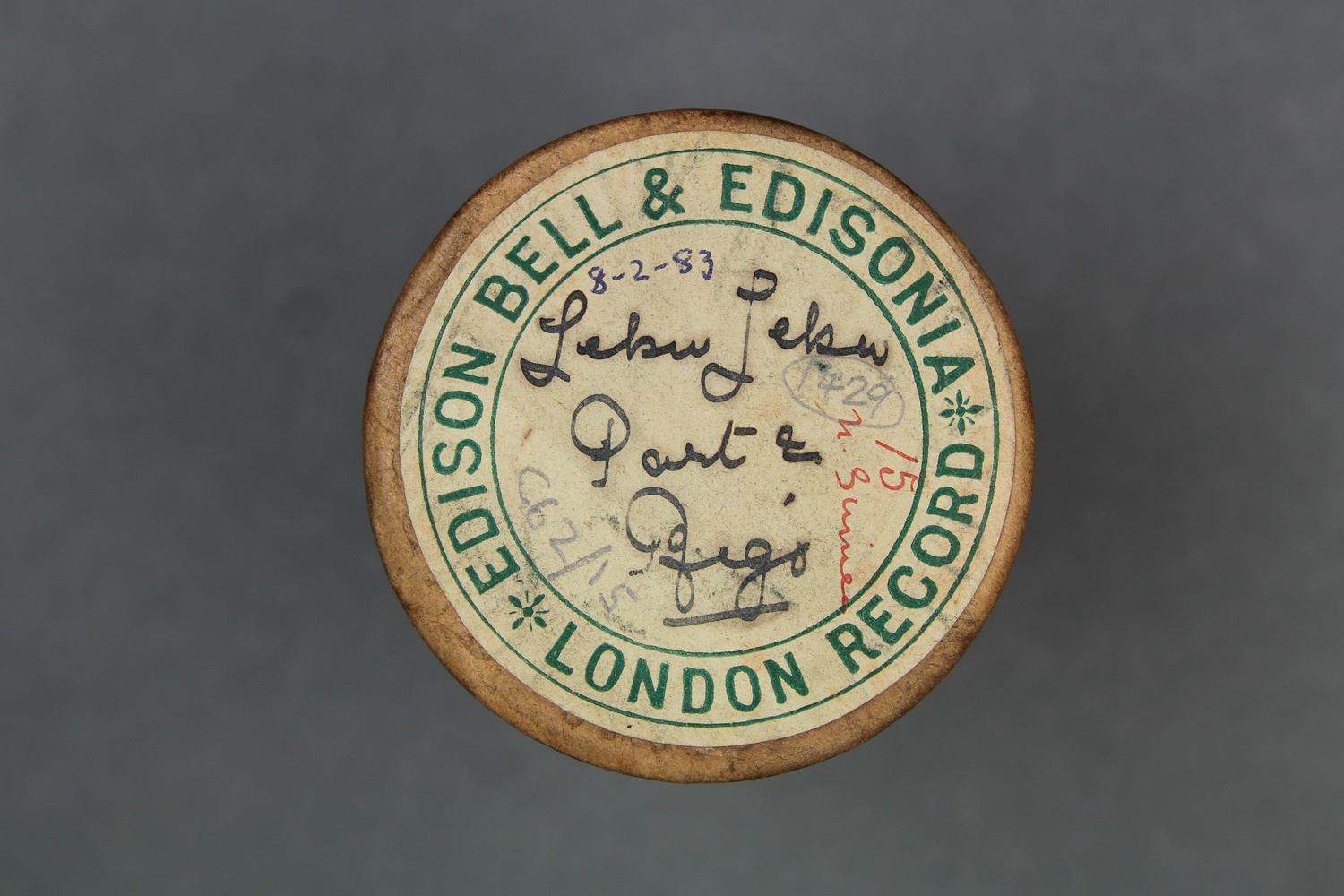      | |||||||
| C62/1430 | 11 Leku Leku Part 1 | Unidentified (male chorus); unidentified (percussion) | Rigo, Central District, British New Guinea | July 1904 | 1. Announcement: "Leku Leku, composed in [indecipherable]'s honour, by Kwaipo, after the battle of Kokila[?]." 2. Vocal group accompanied by percussion. | Good quality recording. | Sinaugoro (?) | Field recordings | Seligman, Charles Gabriel | 2'30" | Daniels Ethnographical Expedition to New Guinea 1904 | Brown wax cylinder | Daniels Ethnographical Expedition to New Guinea 1904 Cylinder Collection (C62) | British Library |       | |||||||
| C62/1431 | 7 Gomi Rigo | Unidentified (singer, male); unidentified (percussion) | Rigo, Central District, British New Guinea | July 1904 | 1. Announcement: "Gomi, a Kokila song, adopted by the Garia and used by them. [indecipherable] brought to the Garia, at the time of the ... [indecipherable] ...Kokila [indecipherable]." 2. Male vocal solo with percussion accompaniment. | Good quality recording but announcement is unclear. | Uare. Garihe (Garia dialect); language also known as Kwale; such is the language of the performers, but originally the song is said to be from Doromu-Koki [kac], Kokila dialect. | Field recordings | Seligman, Charles Gabriel | 2'37" | Daniels Ethnographical Expedition to New Guinea 1904 | Brown wax cylinder | Daniels Ethnographical Expedition to New Guinea 1904 Cylinder Collection (C62) | British Library | 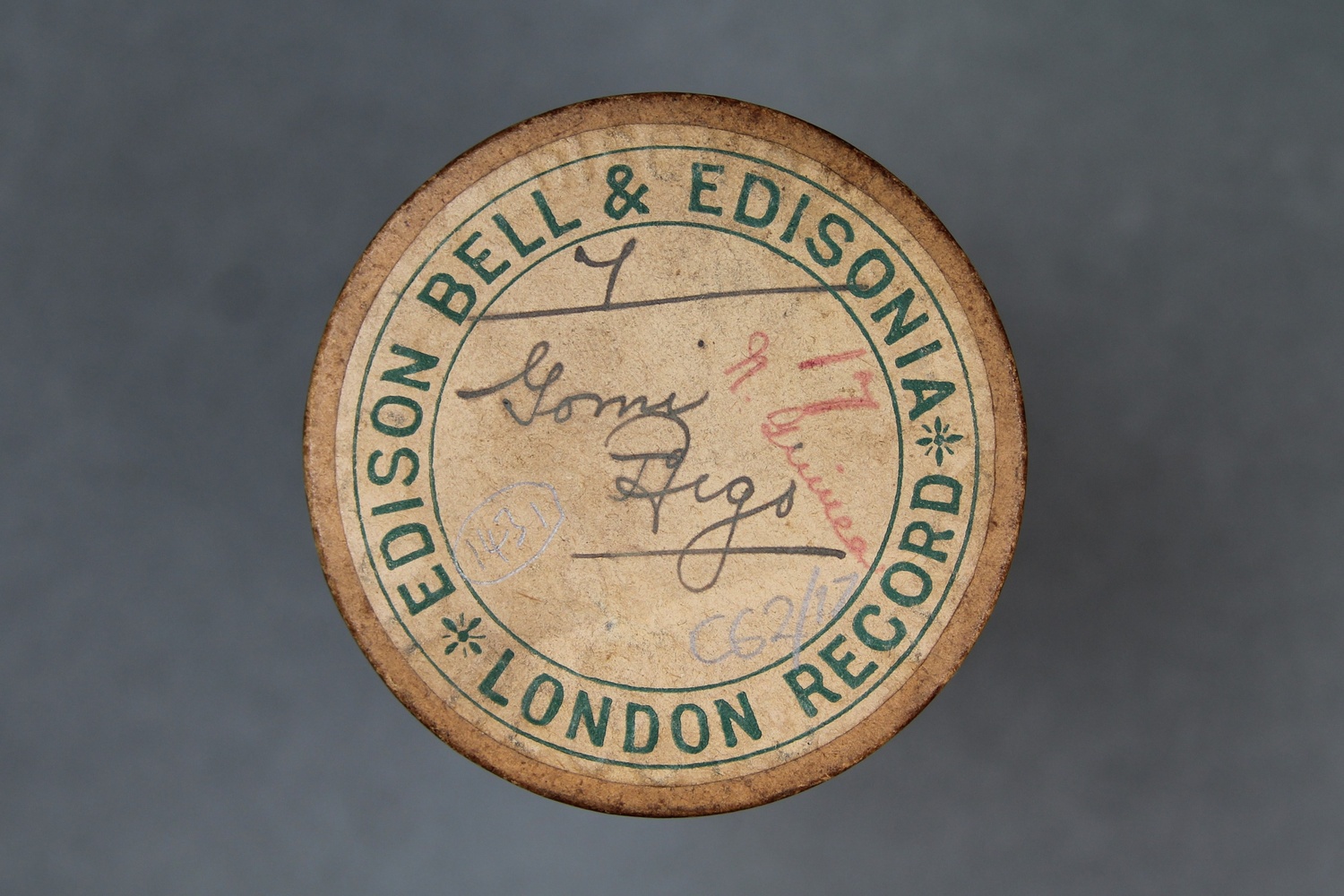      | |||||||
| C62/1432 | 1 Mada Rigo | Unidentified (singer, male); unidentified (percussion) | Rigo, Central District, British New Guinea | July 1904 | 1. Announcement: "[indecipherable] Mada, sung by Warina Koro[?], a native of Taboro Goro[?], an inland [indecipherable]. Rigo district, July 1904." 2. Male vocal solo with percussion accompaniment, ending with chorus of laughter. | Good quality recording. | Sinaugoro | Field recordings | Seligman, Charles Gabriel | 2'28" | Daniels Ethnographical Expedition to New Guinea 1904 | Brown wax cylinder | Daniels Ethnographical Expedition to New Guinea 1904 Cylinder Collection (C62) | British Library | 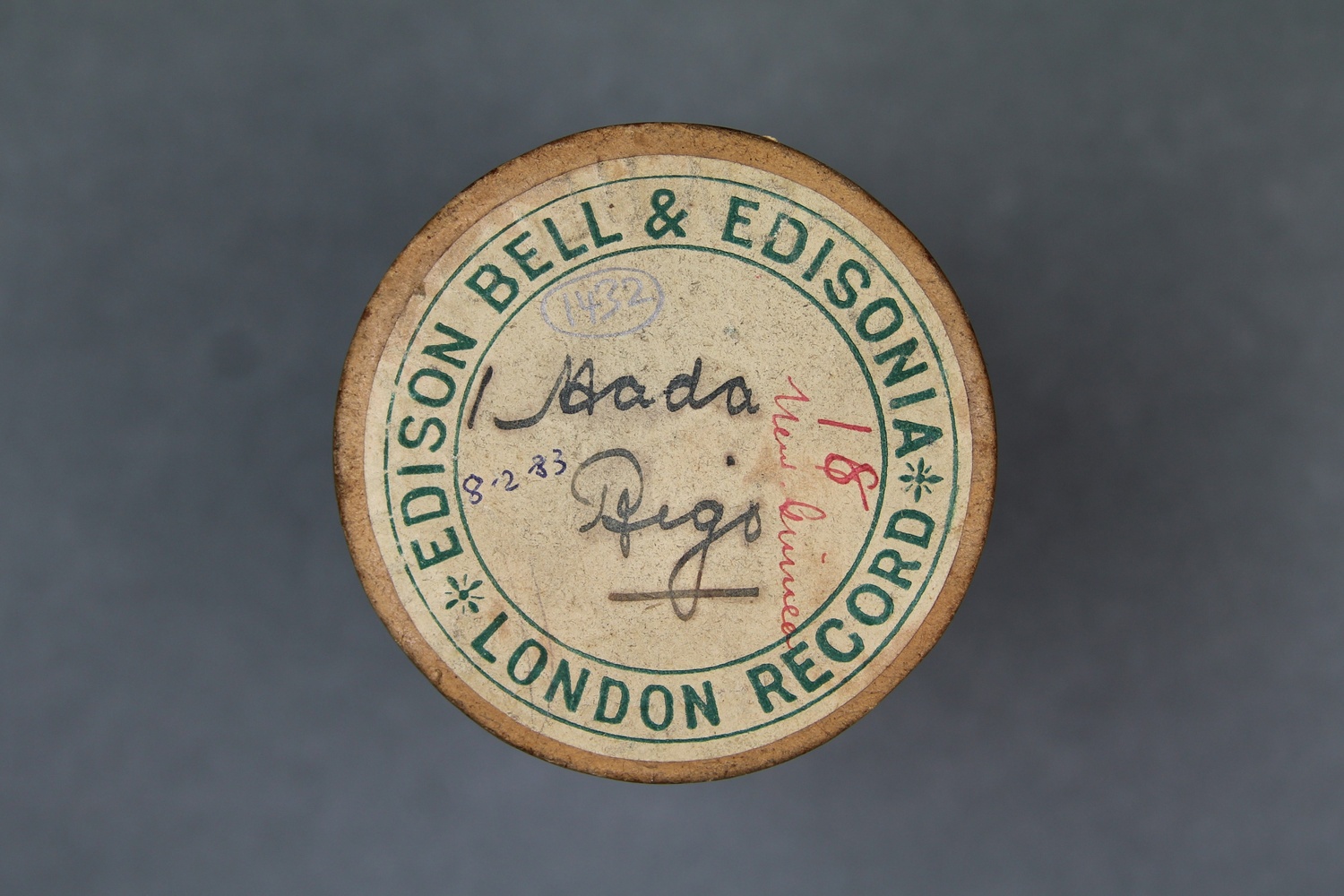      | |||||||
| C62/1433 | 4 Waula Rigo | Unidentified (singer, male); unidentified (percussion) | Rigo, Central District, British New Guinea | July 1904 | 1-2. Male vocal solo, accompanied by percussion. 3. Announcement: "Foregoing songs are sinaugolo waula, sung by [indecipherable] of Gumori-" [ends abruptly]. | Good quality recording but begins with wow, and some surface noise. | Sinaugoro | Field recordings | Seligman, Charles Gabriel | 2'41" | Daniels Ethnographical Expedition to New Guinea 1904 | Brown wax cylinder | Daniels Ethnographical Expedition to New Guinea 1904 Cylinder Collection (C62) | British Library | 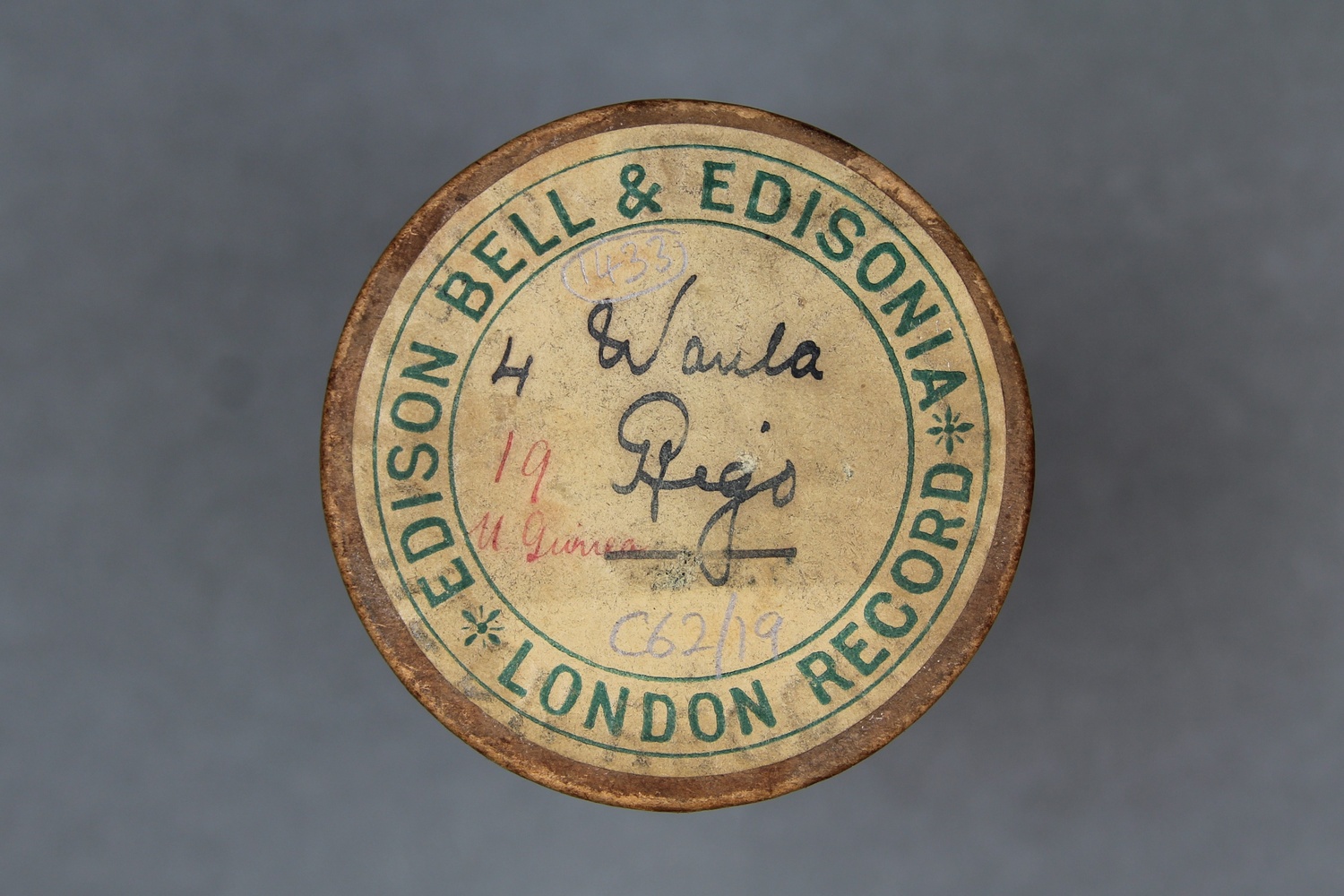      | |||||||
| C62/1434 | 3 Kebene Rigo | Unidentified (singer, male); unidentified (percussion) | Rigo, Central District, British New Guinea | July 1904 | 1. Announcement: "Kebene song, by [indecipherable] of the Garia tribe, Rigo district, July 1904." 2. Male vocal solo, accompanied by percussion. | Good quality recording. | Uare. Garihe (Garia dialect); language also known as Kwale. | Field recordings | Seligman, Charles Gabriel | 2'49" | Daniels Ethnographical Expedition to New Guinea 1904 | Brown wax cylinder | Daniels Ethnographical Expedition to New Guinea 1904 Cylinder Collection (C62) | British Library | 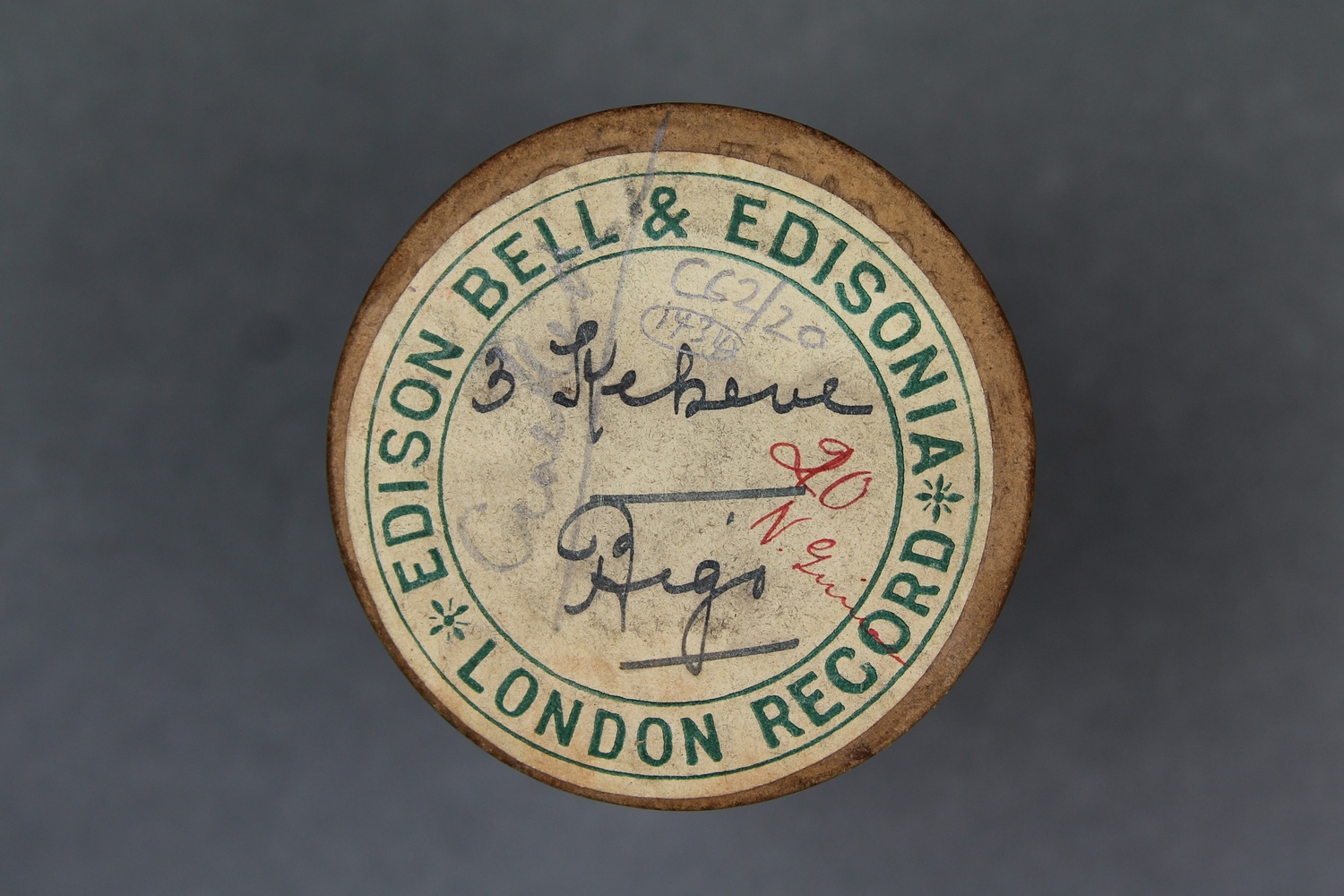      | |||||||
| C62/1435 | 9 Waula (Siromuka) Rigo | Unidentified (singer, male); unidentified (percussion) | Rigo, Central District, British New Guinea | July 1904 | 1. Announcement: "Sinaugolo Waula Siromuka, sung by [indecipherable] and [indecipherable] on Gumari Dobo, Rigo District, July 1904." 2. Male vocal duet with percussion accompaniment. | Good quality recording. | Sinaugoro | Field recordings | Seligman, Charles Gabriel | 2'49" | Daniels Ethnographical Expedition to New Guinea 1904 | Brown wax cylinder | Daniels Ethnographical Expedition to New Guinea 1904 Cylinder Collection (C62) | British Library | 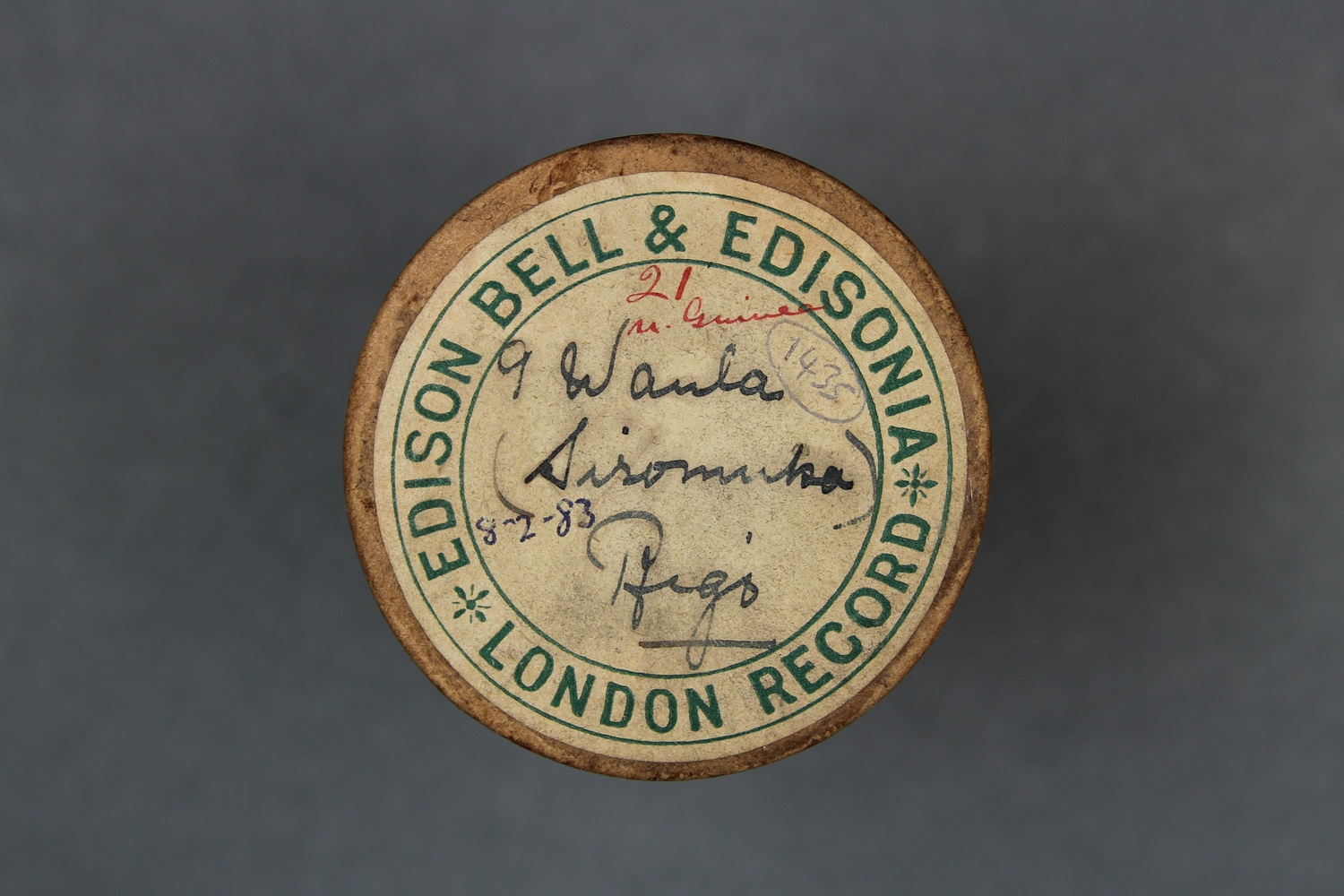      | |||||||
| C62/1436 | 5 Enaniori Rigo | Unidentified (singer, male) | Rigo, Central District, British New Guinea | July 1904 | 1. Announcement: "...[indecipherable] from their ancestral [indecipherable] the meaning of the words now completely forgotten." 2. Unaccompanied male vocal solo. | Sinaugoro | Field recordings | Seligman, Charles Gabriel | 2'46" | Daniels Ethnographical Expedition to New Guinea 1904 | Brown wax cylinder | Daniels Ethnographical Expedition to New Guinea 1904 Cylinder Collection (C62) | British Library | 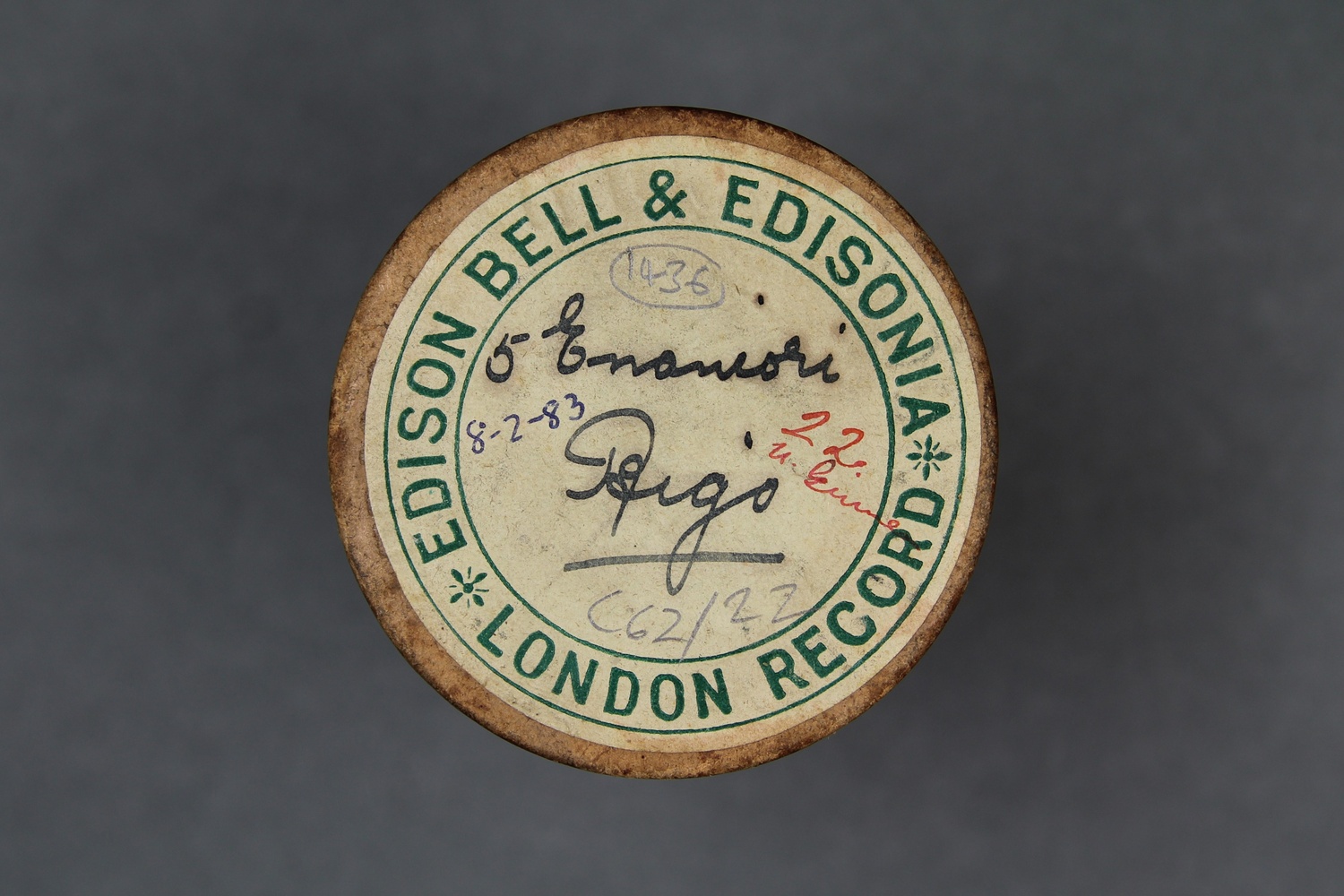      | ||||||||
| C62/1442 | Geagea | Unidentified (male chorus); unidentified (percussion) | Rigo, Central District, British New Guinea | July 1904 | 1. Announcement: "Geogeo, a Sinaugolo dance song, sang [sic] at Rigo, 1904." 2. Male vocal group with percussion accompaniment. | Good quality recording. | Sinaugoro | Field recordings | Seligman, Charles Gabriel | 2'47" | Daniels Ethnographical Expedition to New Guinea 1904 | Brown wax cylinder | Daniels Ethnographical Expedition to New Guinea 1904 Cylinder Collection (C62) | British Library |       |
Hula (Kulaa)
The expedition visited Hula, at the edge of the Rigo district, spending 13 to 19 July in that area. It is likely that these five cylinders, all of which mention Hula, were recorded in that period. There is no information on any of the Hula recordings in Seligmann’s publications, and it is not clear whether the recording of the leku made about Gima going to jail mentioned in his journal (Seligmann 1903-1904:112) has survived.
The final mention of recording in Seligmann’s journal is from 15 July in Hula, also referred to as Kulaa or Bulaa. Seligmann noted that the chief, Gima, was “rather proud of having a leku made about his going to jail & had it sung to the phonograph with pleasure” (Seligmann 1903-1904:112). It is not clear which recording this is.
Leku, or lekuleku may well be a genre of song. John Kolia listed leku as “a war song” (1975:187) in the Balawaia language. Balawaia is considered a dialect of Sinaugoro language, but the language area is near Hula, and languages in that area are quite closely related. Kolia also mentioned the dances “Leku and Vaura of the other Sinaugolo …” (1981:236).
Leku Leku Kulaa also mentions kwaipo, again presumably this refers to people from the village of Kwaibo itself or who speak the Kwaibo dialect of the Sinagoro language. The village is in Rigo District, about 20 kilometres north-east of Hula, and about 30 km south-east of Rigo (see map above, Dutton 1970:895).
Regarding the word roro in the title of C62/1422, Heather Donoghue noted that “’Roro’ means ‘to dry up’ in vula’a…and is likely the song title rather than any reference to the Roro people further west.”5Heather Donoghue email to Vicky Barnecutt 20 February 2020. Vula’a is the language spoken by people in Hula.
| British Library shelfmark | Recording title | Performer name | Recording location | Recording date | Content description | Performer description | Recording notes | Languages | Genre | Recordist | Recording length | Recording trip | Description of cylinder | Collection title | Cylinder location | Images of cylinder containers / documentation | Related print publication: | Related print publication: | Related print publication: | Related print publication: | Related print publication: | Related print publication: |
|---|---|---|---|---|---|---|---|---|---|---|---|---|---|---|---|---|---|---|---|---|---|---|
| C62/1421 | 13 Ariparla kulaa | Unidentified (male chorus) | Hula, Central District, British New Guinea | July 1904 | 1. Announcement: "Ariparla, lament for the dead, sung round the body for the first 24 hours. Kulaa." 2. Unaccompanied male vocal group singing in harmony. | Good quality recording. | Hula | Field recordings; Laments | Seligman, Charles Gabriel | 3'15" | Daniels Ethnographical Expedition to New Guinea 1904 | Brown wax cylinder | Daniels Ethnographical Expedition to New Guinea 1904 Cylinder Collection (C62) | British Library | 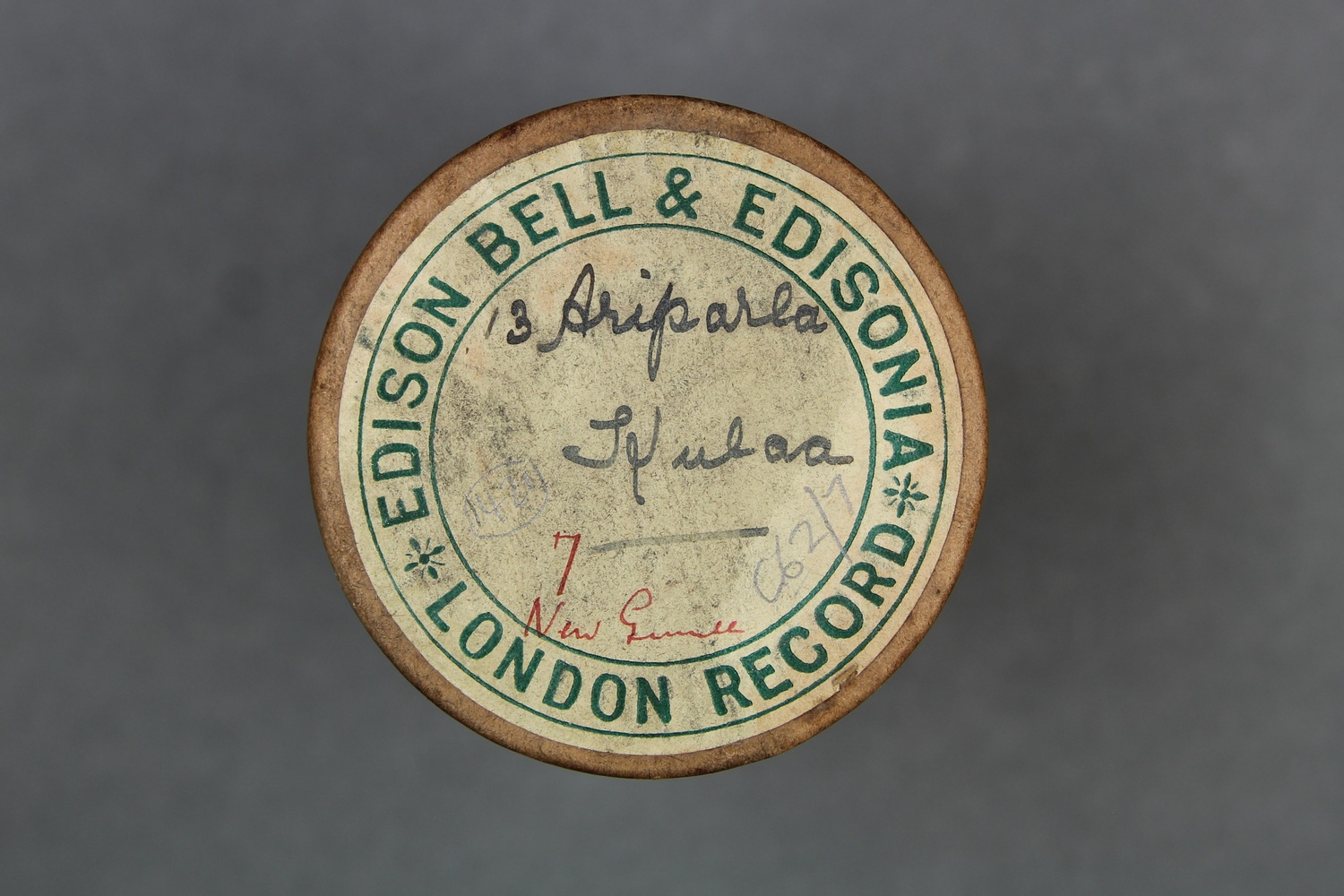      | |||||||
| C62/1422 | Roro Kulaa | Unidentified (male chorus) | Hula, Central District, British New Guinea | July 1904 | 1. Announcement: "Roro. A kulaa song, sung only by the older folk of both sexes." 2. Unaccompanied vocal group. | Good quality recording. | Hula | Field recordings | Seligman, Charles Gabriel | 3'15" | Daniels Ethnographical Expedition to New Guinea 1904 | Brown wax cylinder | Daniels Ethnographical Expedition to New Guinea 1904 Cylinder Collection (C62) | British Library |       | |||||||
| C62/1423 | 16 Palarupu Kulaa | Unidentified (male chorus) | Hula, Central District, British New Guinea | July 1904 | 1. Announcement: "Palarupa. Sung by successful [?] homicide, [indecipherable]. Kulaa." 2. Unaccompanied male vocal group. | Good quality recording although with some surface noise. | Hula | Field recordings; Sung after homicide | Seligman, Charles Gabriel | 3'04" | Daniels Ethnographical Expedition to New Guinea 1904 | Brown wax cylinder | Daniels Ethnographical Expedition to New Guinea 1904 Cylinder Collection (C62) | British Library | 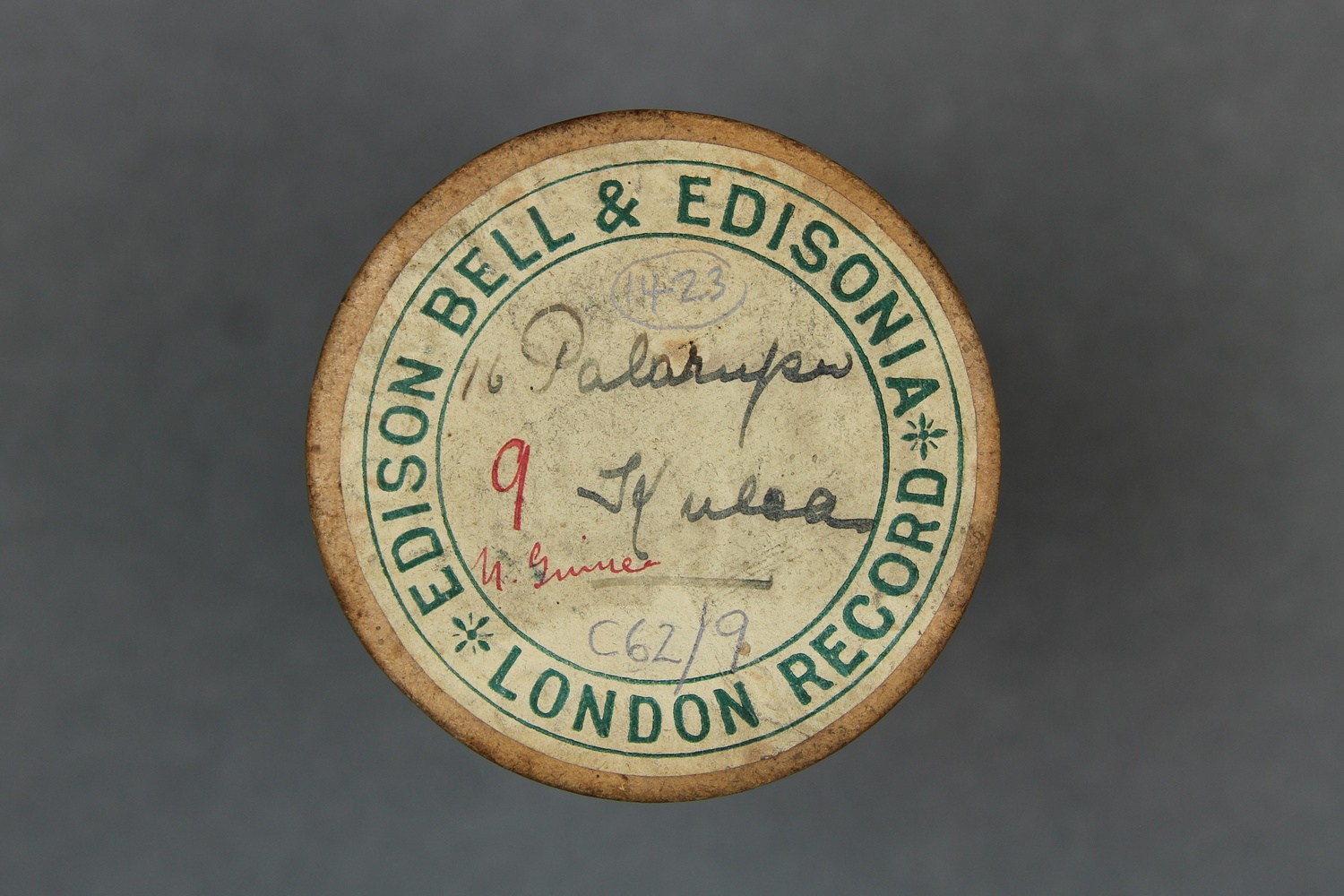      | |||||||
| C62/1425 | 14 Kele kele Kulaa | Unidentified (male chorus) | Hula, Central District, British New Guinea | July 1904 | 1. Announcement: "Kele kele song sung in Naka'ana's [?] house, before the turtle neck was put upon the canoe. Kulaa." 2. Vocal group singing in harmony, accompanied by percussion. | Good quality recording, although track 2 begins and ends with repeating grooves. | Hula | Field recordings | Seligman, Charles Gabriel | 3'10" | Daniels Ethnographical Expedition to New Guinea 1904 | Brown wax cylinder | Daniels Ethnographical Expedition to New Guinea 1904 Cylinder Collection (C62) | British Library | 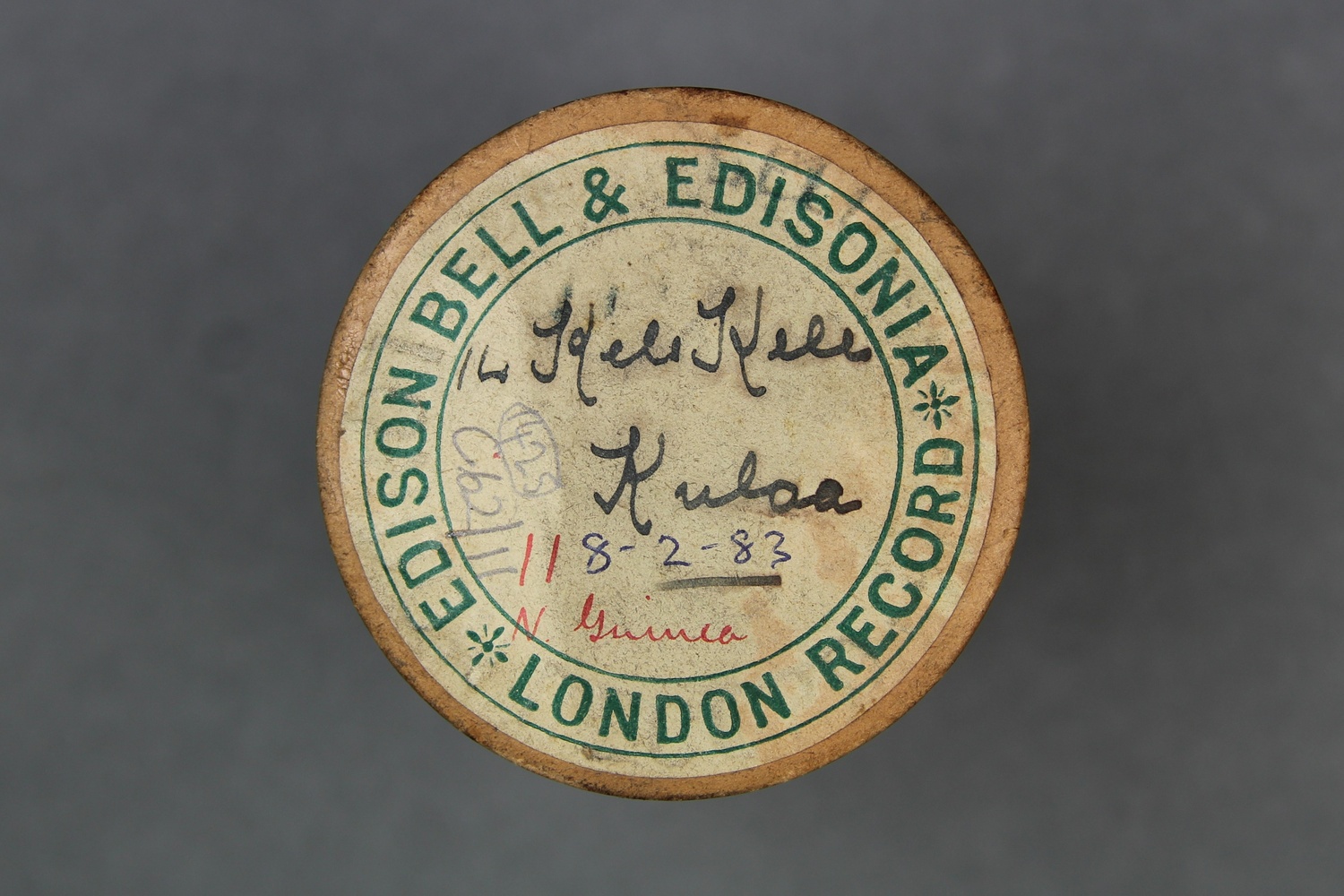 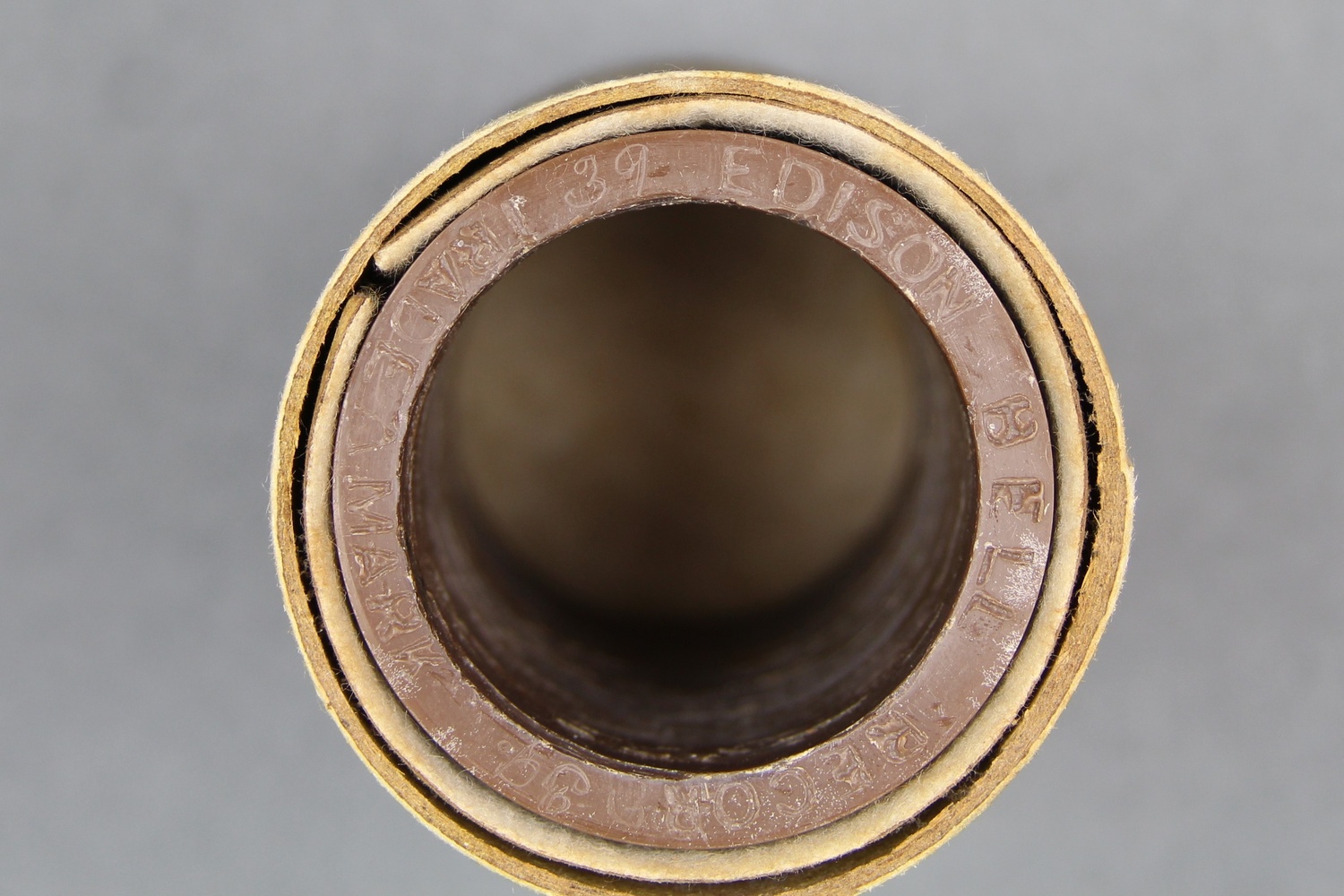     | |||||||
| C62/1491 | 15 Leku Leku Kulaa | Unidentified (chorus); unidentified (percussion) | Hula, Central District, British New Guinea | July 1904 | 1. Announcement: "Kwaipo Liku Liku, adopted and sung by the Kulaa." 2. Vocal group accompanied by drumming and clapping. | Good quality recording, although some surface noise. | Hula | Field recordings | Seligman, Charles Gabriel | 2'49" | Daniels Ethnographical Expedition to New Guinea 1904 | Light brown wax cylinder | Daniels Ethnographical Expedition to New Guinea 1904 Cylinder Collection (C62) | British Library | 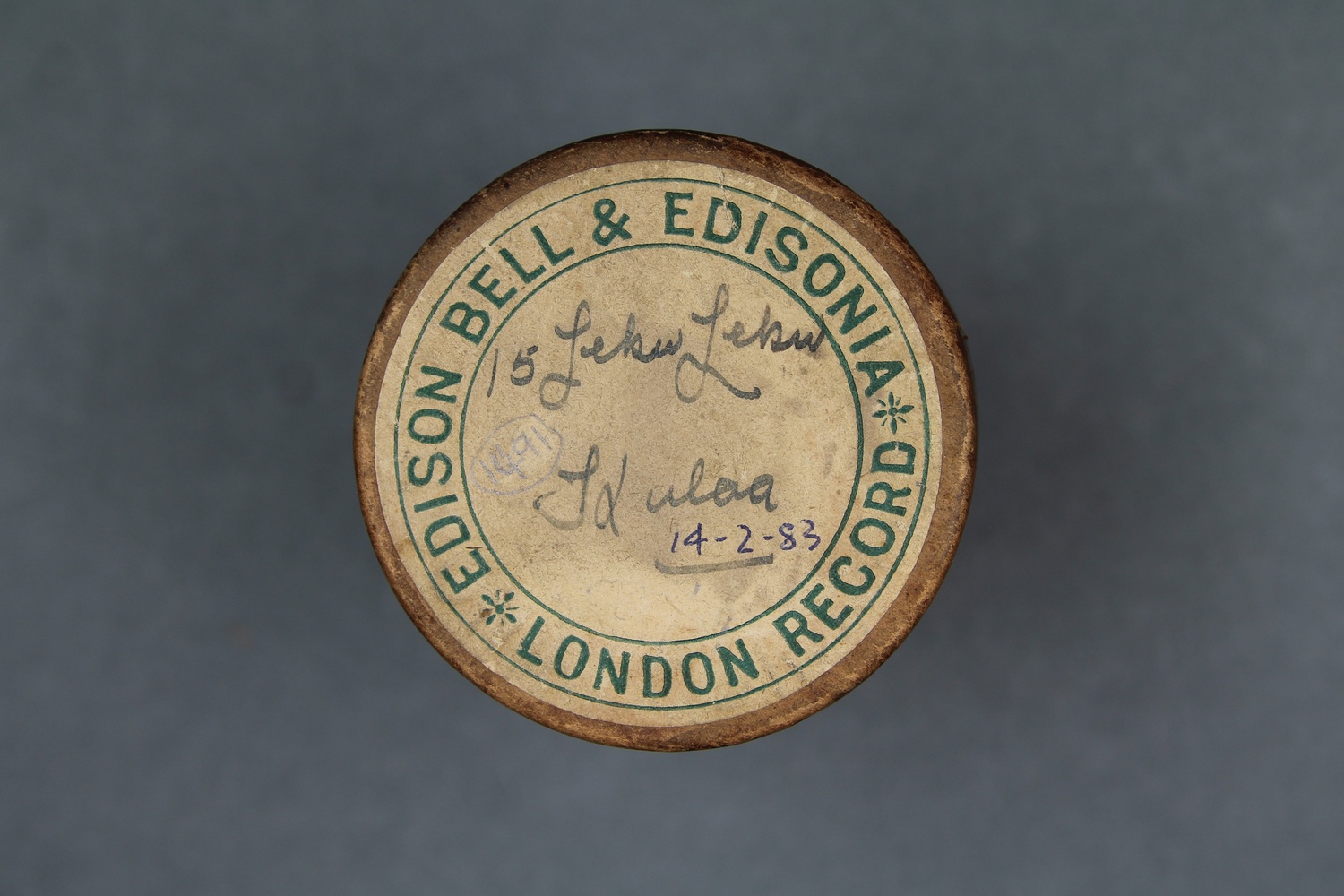      |
Tubetube / Slade Island recordings
“A song called gumgum is said to have come from Kwararo and is sung without the accompaniment of drum or dance. It is commonly sung in canoes while paddling or sailing, but may be sung at other times” (Seligmann 1910:588). The performer’s name, Nabuyara[?], is noted for this recording; it is the only Tubetube recording where an individual’s name is noted.
| British Library shelfmark | Recording title | Performer name | Recording location | Recording date | Content description | Performer description | Recording notes | Languages | Genre | Recordist | Recording length | Recording trip | Description of cylinder | Collection title | Cylinder location | Images of cylinder containers / documentation | Related print publication: | Related print publication: | Related print publication: | Related print publication: | Related print publication: | Related print publication: |
|---|---|---|---|---|---|---|---|---|---|---|---|---|---|---|---|---|---|---|---|---|---|---|
| C62/1440 | 19 Yadarai Tube Tube | Unidentified (singer, male) | Tube Tube, Slade Island, British New Guinea | 5 August 1904 | 1. Announcement: "Yadarai. The third song, sung at the Waia ceremony, Rogeia. Originally learnt from the Durupi[?] in Milne Bay. Sung Tube Tube, 5th August 1904." 2. Unaccompanied male vocal solo. A favourite dancing song. | Good quality recording with strong signal, but some repeating grooves. | Bwanbwana | Field recordings | Seligman, Charles Gabriel | 3'18" | Daniels Ethnographical Expedition to New Guinea 1904 | Brown wax cylinder | Daniels Ethnographical Expedition to New Guinea 1904 Cylinder Collection (C62) | British Library | 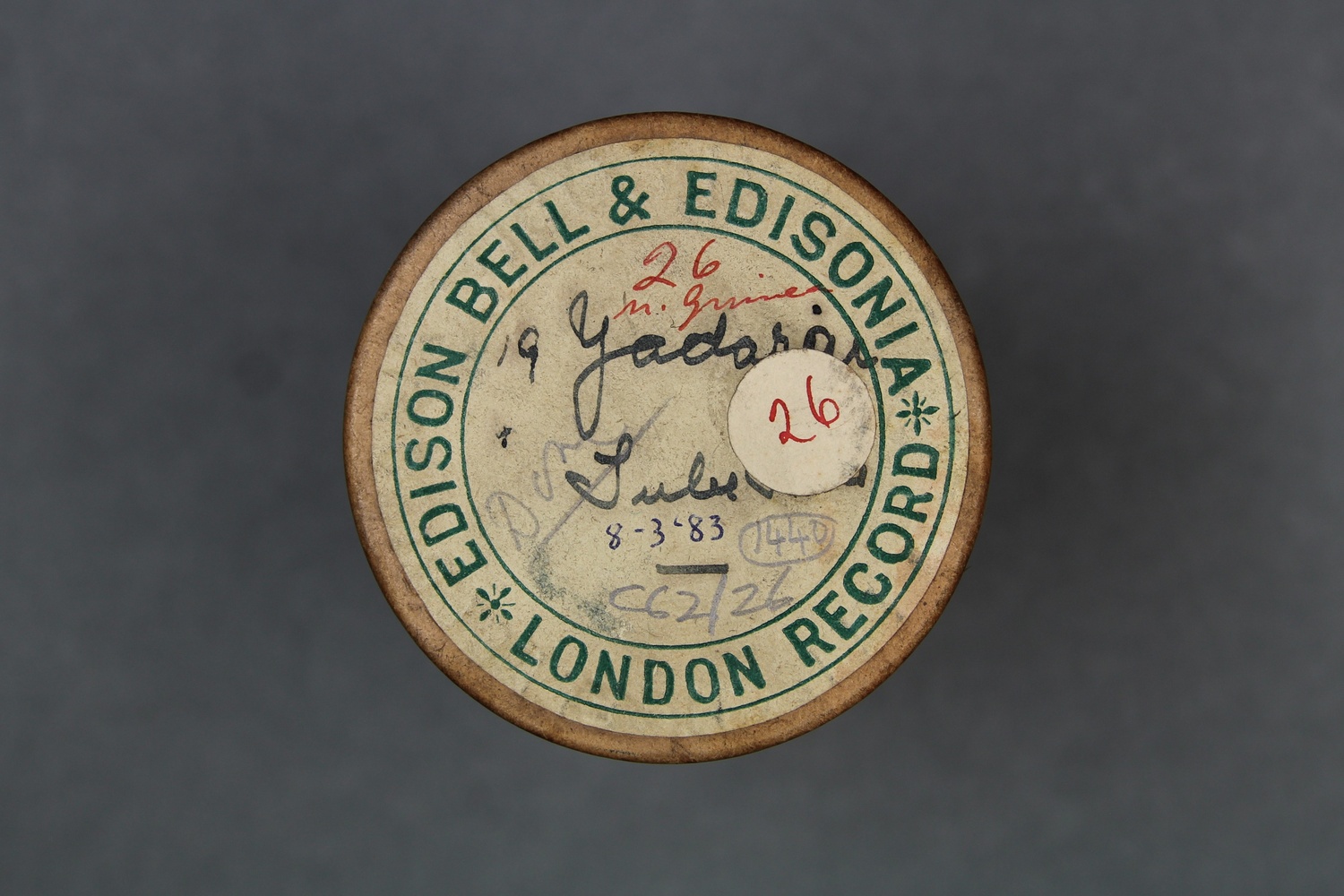      | This song is mentioned in Charles G. Seligmann, 'The Melanesians of British New Guinea', Cambridge University Press, 1910:588. | ||||||
| C62/1441 | Bona Bona Tube Tube | Unidentified (singer, male) | Tube Tube, Slade Island, British New Guinea | August 1904 | 1. Announcement: "Bona Bona. The secong song sung at the Waia ceremony, Rogeia. It was learned originally from the Durupi people of Milne Bay." 2. Unaccompanied male vocal solo. A favourite dancing song. | Good quality recording with strong signal but some surface noise. | Bwanbwana | Field recordings | Seligman, Charles Gabriel | 3'10" | Daniels Ethnographical Expedition to New Guinea 1904 | Brown wax cylinder | Daniels Ethnographical Expedition to New Guinea 1904 Cylinder Collection (C62) | British Library | 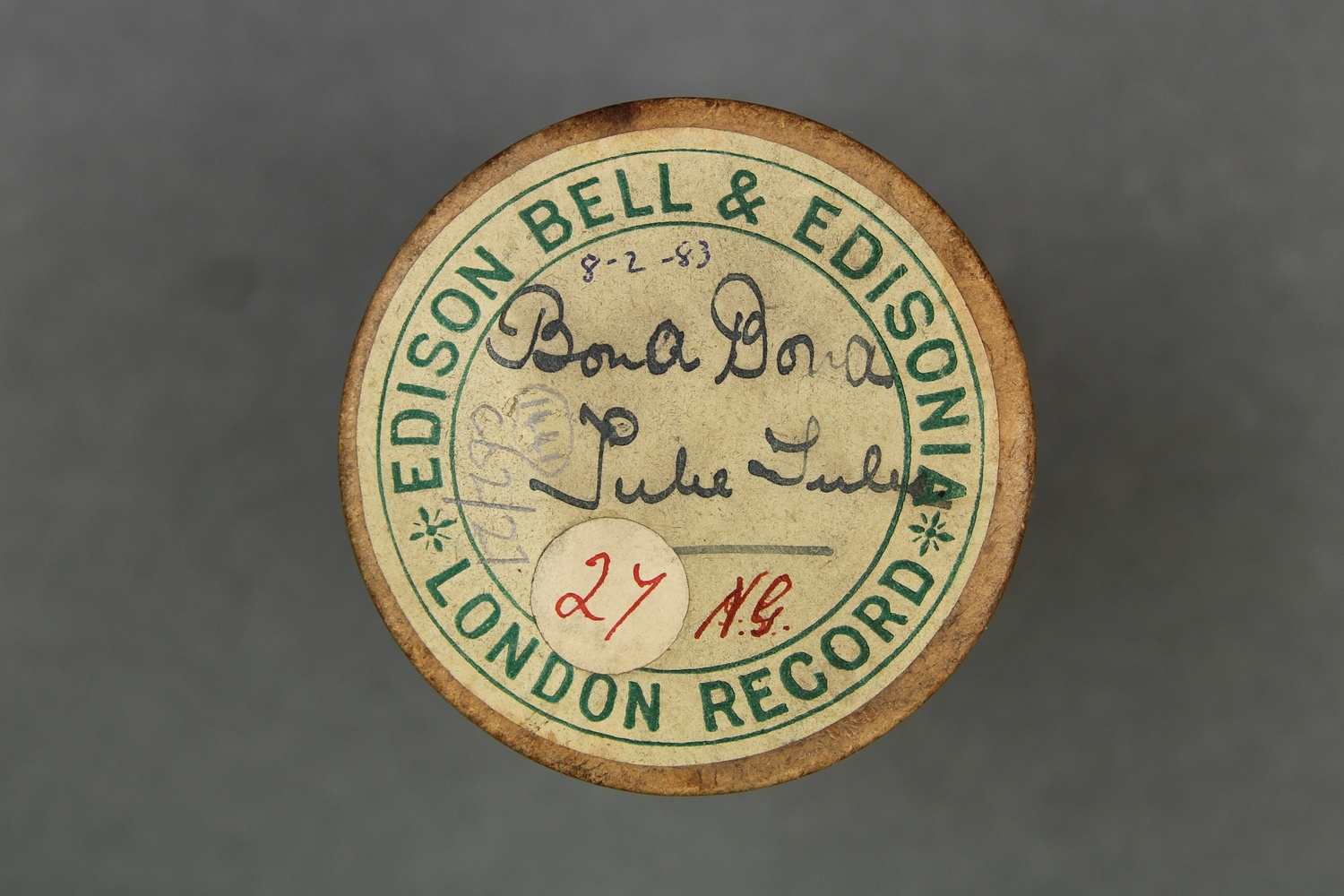      | This song is mentioned in Charles G. Seligmann, 'The Melanesians of British New Guinea', Cambridge University Press, 1910:588. | ||||||
| C62/1448 | 20 Yaubena Tube Tube | Unidentified (singer, male) | Tube Tube, Slade Island, British New Guinea | August 1904 | 1. Announcement: "Yaubena. The first song sung at the Waia ceremony, Rogeia. It was originally learned from the Durubi[?] a people from Milne Bay." 2. Unaccompanied male vocal solo. | Good quality recording with strong signal. | Bwanbwana | Field recordings | Seligman, Charles Gabriel | 3'13" | Daniels Ethnographical Expedition to New Guinea 1904 | Brown wax cylinder | Daniels Ethnographical Expedition to New Guinea 1904 Cylinder Collection (C62) | British Library | 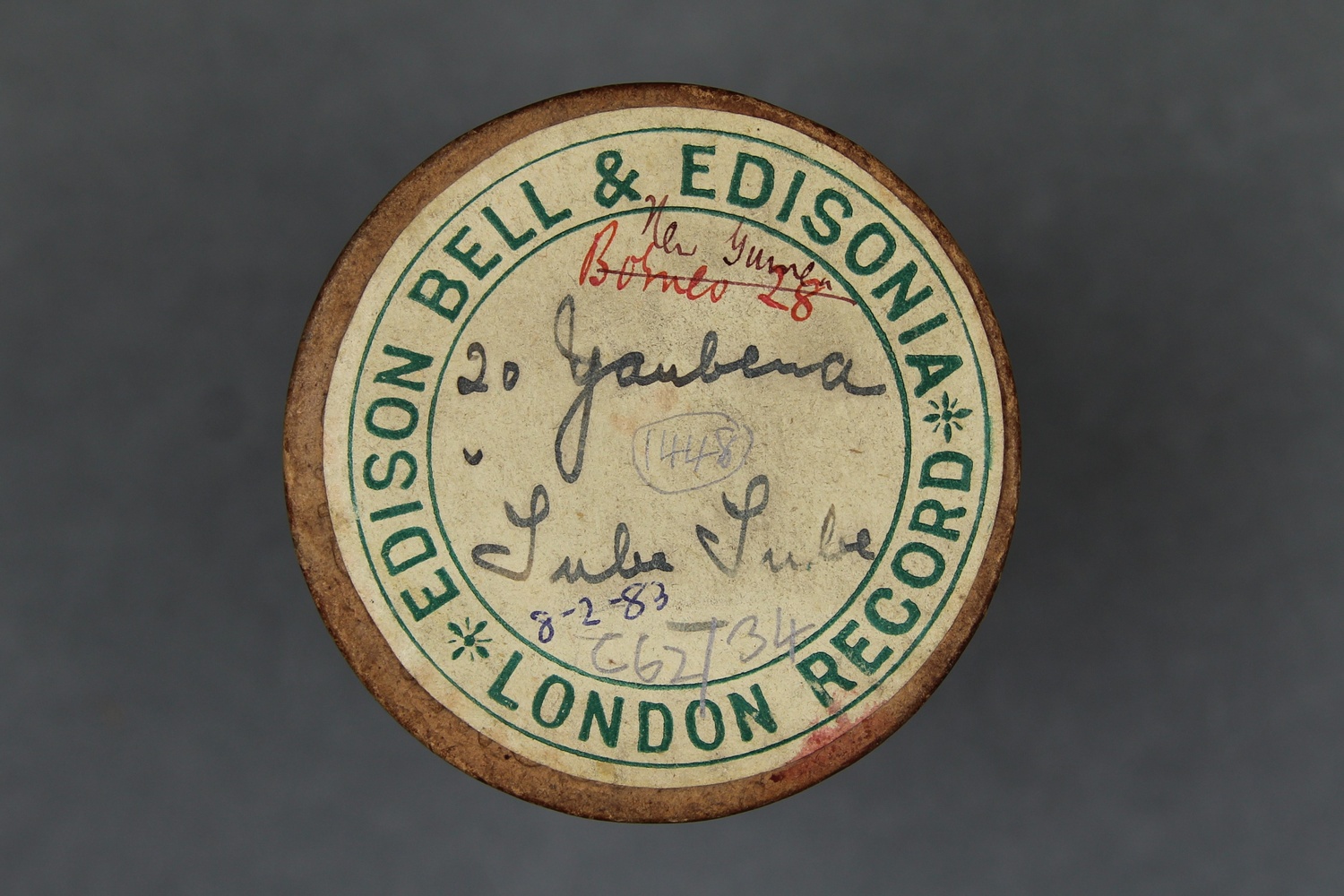      | This song is mentioned in Charles G. Seligmann, 'The Melanesians of British New Guinea', Cambridge University Press, 1910:520, 588, 753. | ||||||
| C62/1449 | 21 Gum Gum Tube Tube | Nabuyara (singer, male) | Tube Tube, Slade Island, British New Guinea | 5 August 1904 | 1. Announcement: "Wai-ina[?], a Kwararo song, called the Tube Tube Gum Gum. Sung by Nabuyara[?], August 5th 1904." 2. Unaccompanied male vocal solo. This song is said to have come from Kwararo, and is sung in canoes whilst paddling or sailing, and at other times. | Reasonable quality recording but with weak signal and surface noise. | Bwanbwana | Field recordings | Seligman, Charles Gabriel | 3'14" | Daniels Ethnographical Expedition to New Guinea 1904 | Brown wax cylinder | Daniels Ethnographical Expedition to New Guinea 1904 Cylinder Collection (C62) | British Library | 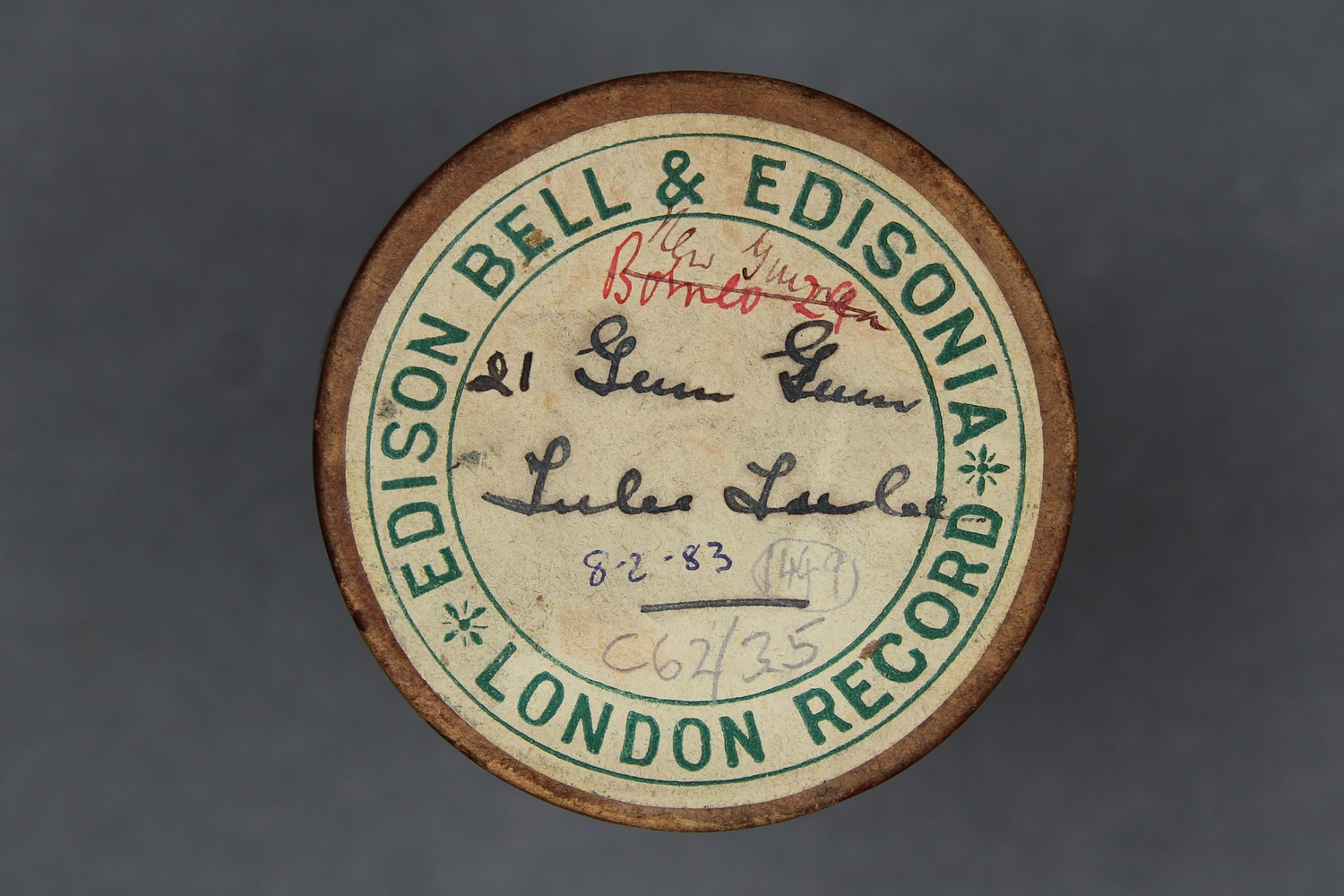      | This song is mentioned in Charles G. Seligmann, 'The Melanesians of British New Guinea', Cambridge University Press, 1910:588. | ||||||
| C62/1453 | 23 Rausi Tube Tube | Unidentified (singer, male) | Tube Tube, Slade Island, British New Guinea | August 1904 | 1. Announcement: "Tube Tube song, and dance." 2. Unaccompanied male vocal solo. A song or dance performed during the soi funeral feast and festivities. | Poor quality recording with tracking problems throughout due to broken cylinder. | Bwanbwana | Field recordings | Seligman, Charles Gabriel | 3'09" | Daniels Ethnographical Expedition to New Guinea 1904 | Brown wax cylinder | Daniels Ethnographical Expedition to New Guinea 1904 Cylinder Collection (C62) | British Library | 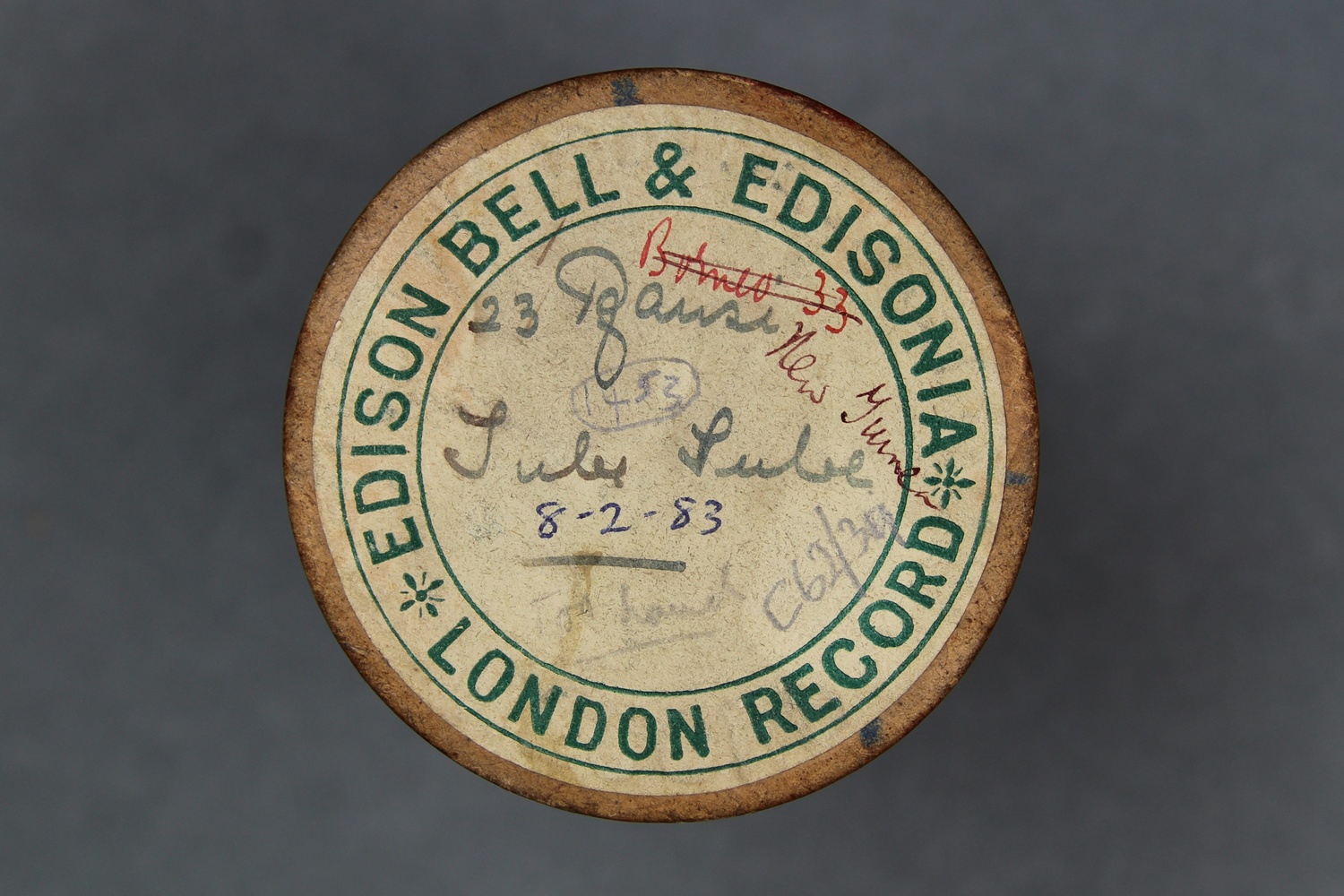      | This song may be discussed and transcribed in Charles G. Seligmann, 'The Melanesians of British New Guinea', Cambridge University Press, 1910:520, 588, 753. |
Trobriand Islands
The cylinder labels record that these two cylinders were numbers 26 and 27. Both were songs “sung at the Kaiwos Womilamala” according to their announcements. Seligmann defined kaiwos womilamala as “a funeral feast (Trobriands)” (1910:750).
| British Library shelfmark | Recording title | Performer name | Recording location | Recording date | Content description | Performer description | Recording notes | Languages | Genre | Recordist | Recording length | Recording trip | Description of cylinder | Collection title | Cylinder location | Images of cylinder containers / documentation | Related print publication: | Related print publication: | Related print publication: | Related print publication: | Related print publication: | Related print publication: |
|---|---|---|---|---|---|---|---|---|---|---|---|---|---|---|---|---|---|---|---|---|---|---|
| C62/1419 | 27 Osebouta Trobriands | Unidentified (spoken, male) | Trobriand Islands, British New Guinea | September 1904 | 1. Announcement: "Osebouta. A sung [?] song at the Kaiwos Womilamala, by [indecipherable]. Trobriand Islands, September 1904." Song sung at a funeral feast. | Good quality recording. | Kilivila | Field recordings; Laments | Seligman, Charles Gabriel | 3'09" | Daniels Ethnographical Expedition to New Guinea 1904 | Brown wax cylinder | Daniels Ethnographical Expedition to New Guinea 1904 Cylinder Collection (C62) | British Library | 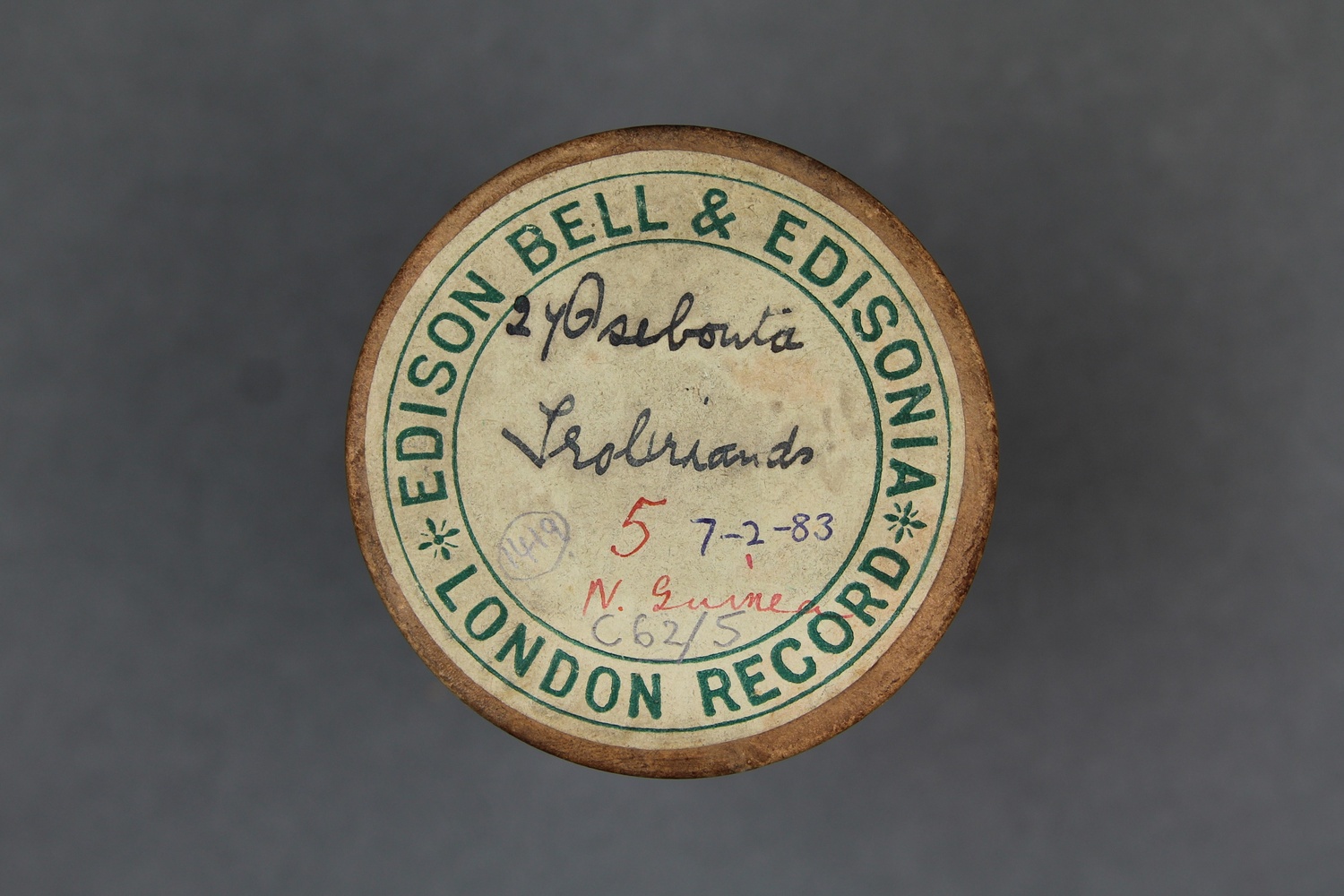      | The feast is mentioned in Charles G. Seligmann, 'The Melanesians of British New Guinea', Cambridge University Press, 1910:750. | ||||||
| C62/1420 | 26 Mamiepo | Unidentified (spoken, male); Unidentified (singer, male) | Trobriand Islands, British New Guinea | September 1904 | 1. Announcement: "Song sung at Kaiwos womilama, Trobriand Islands, September 1904." 2. Unaccompanied male vocal solo. Song sung at a funeral feast. | Good quality recording. | Kilivila | Field recordings; Laments | Seligman, Charles Gabriel | 3'09" | Daniels Ethnographical Expedition to New Guinea 1904 | Brown wax cylinder | Daniels Ethnographical Expedition to New Guinea 1904 Cylinder Collection (C62) | British Library |  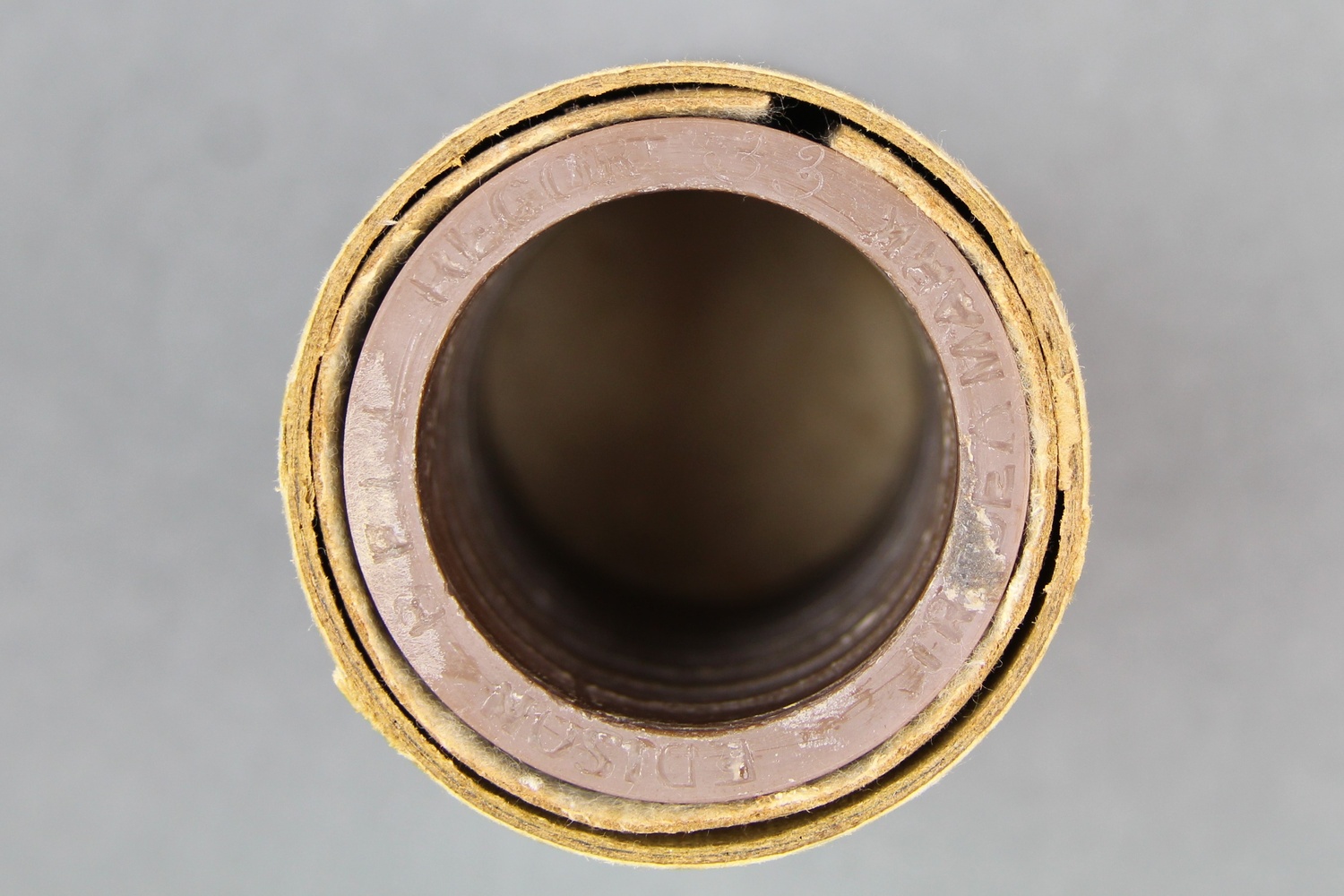     | The feast is mentioned in Charles G. Seligmann, 'The Melanesians of British New Guinea', Cambridge University Press, 1910:750. |
Waga Waga
The expedition spent 1–10 October in and around the village of Wagawaga in Milne Bay, recording these six cylinders there. Seligmann’s comment that shyness prevented them collecting songs in Wagawaga disappeared when “the men who were considered the best singers” were taken to the schooner to perform (Seligmann 1910:586) indicates that these recordings were all made onboard the schooner Kori. The songs of all six cylinders were transcribed in The Melanesians.
“Damorea.
Sapidobu yaruyaruna budibudi kauyare kauyare dogedoge dogem doge.
It was said that yaruyaruna was ‘no proper word belong talk,’ while dogedoge dogem doge conveyed absolutely no meaning to my informants. Sapidobu may mean ‘earring’ and budibudi ‘mist’”
(Seligmann 1910:587).
“Kwabiai.
Kwabiai noyanoayana i gae
From Kabiai (all) news it goes eastward.
This song comes from Dapaüna in Milne Bay to the west of Wagawaga and perhaps means that ‘news travels about’”
(Seligmann 1910:588)
The third and fourth recordings are related, C62/1445 Nuauuro Waga Waga and C62/1450 Nuauuro B. The transcription and translations of these are:
“Nuauuro.
Dibiri i towiwira magu i to i
High water it runs out very low water it runs out it
toyauyau
runs out continually.
This song was stated to mean that when it is high water the tide runs out steadily until low water is reached. A second part of this song was given as:
Kubona tareluo bagi Dumodumoia i nituri
The star it will approach
i pesama kubona tete i nihima
he comes down morning star it will come here.
The meaning of this part of the song was unknown; bagi is the most valued shell ornament of the district, Dumodumoia was said to be the name of the village-system or island”
(Seligmann 1910:587)
C62/1446 Oge Oge Waga Waga was translated and transcribed here:
“Ogoögo.
Maimaiwapa
A man with long locks hanging down the back of his neck
tanodi tanorai tanorere tanodumodumoria
their land our land a flat land the land of Dumodumoia.
The meaning of this song is not known”
(Seligmann 1910:587)
The final Waga Waga song is C62/1447 Pediri Waga Waga. It was also transcribed and translated.
Pediri.
Tokadau Tubetube mana
(A man) he sails about (to) Tubetube (the) wind
mana i yomumuraia Dagedagera ya kuke igu
(the) wind it blows hard Dagedagera start from my
waga Porububuni si aruma dowei
canoe Porububuni is bailed out the frigate bird (screeches)
mana i yomumuraia
(the) wind it blows hard.
This song was stated to mean that a man went to Tubetube but that on returning from Dagedagera such a storm arose as to necessitate constant bailing. Porububuni was the name of the canoe
(Seligmann 1910:586-587)
| British Library shelfmark | Recording title | Performer name | Recording location | Recording date | Content description | Performer description | Recording notes | Languages | Genre | Recordist | Recording length | Recording trip | Description of cylinder | Collection title | Cylinder location | Images of cylinder containers / documentation | Related print publication: | Related print publication: | Related print publication: | Related print publication: | Related print publication: | Related print publication: |
|---|---|---|---|---|---|---|---|---|---|---|---|---|---|---|---|---|---|---|---|---|---|---|
| C62/1443 | Damorea Waga Waga | Unidentified (singer, male) | Waga Waga, Milne Bay, British New Guinea | October 1904 | 1. Announcement "Damorea. A Waga Waga song, sung at the Toreha by Wiri [?]." 2-3. Unaccompanied male vocal solo. A song sung at a funeral feast. | Good quality recording. | Wagawaga | Field recordings; Laments | Seligman, Charles Gabriel | 3'10" | Daniels Ethnographical Expedition to New Guinea 1904 | Brown wax cylinder | Daniels Ethnographical Expedition to New Guinea 1904 Cylinder Collection (C62) | British Library | 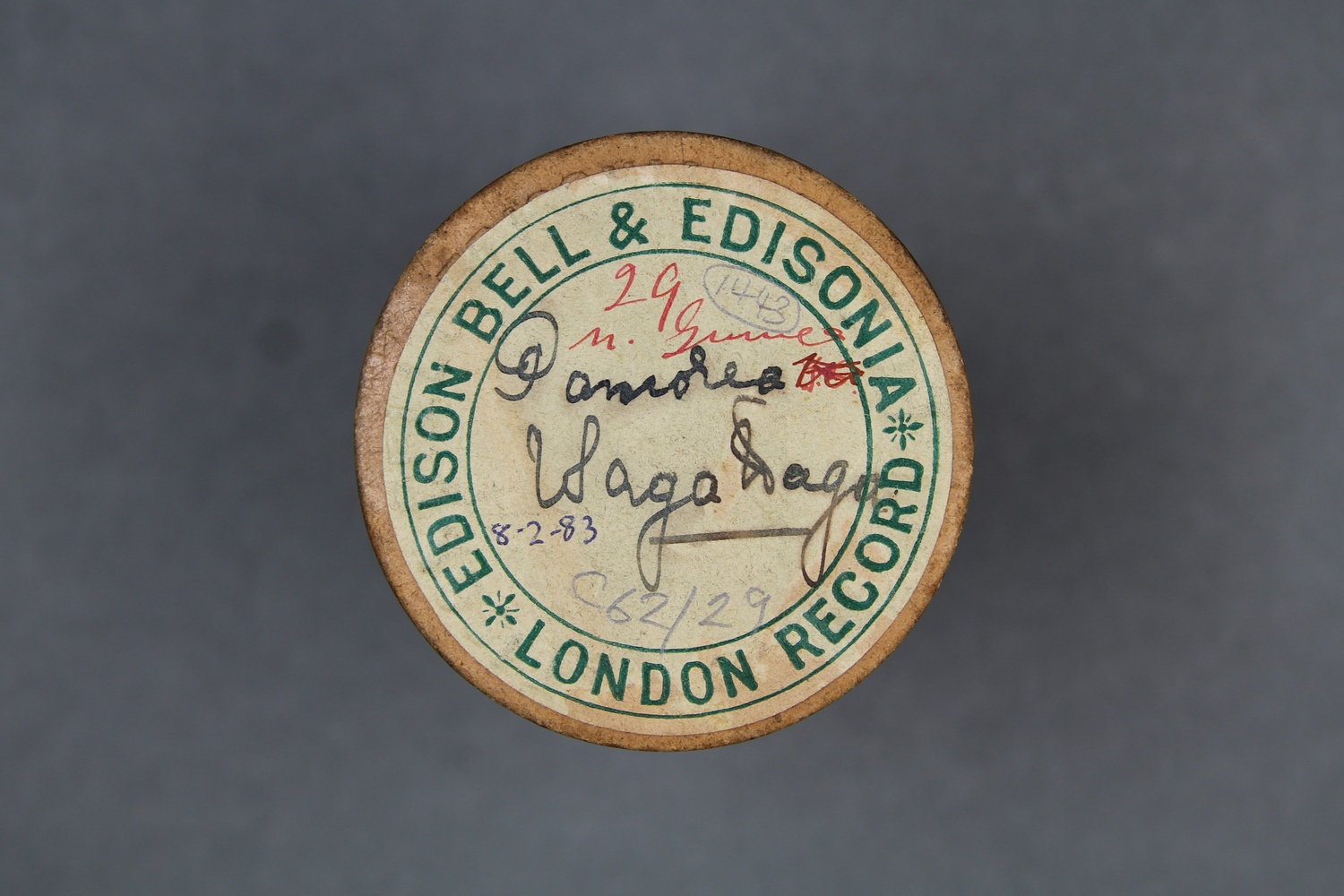      | This song is transcribed in Charles G. Seligmann, 'The Melanesians of British New Guinea', Cambridge University Press, 1910:587. | ||||||
| C62/1444 | Kwabiai Waga Waga | Unidentified (singer, male) | Waga Waga, Milne Bay, British New Guinea | October 1904 | 1. Announcement: "Kwabiaia, a Waga Waga song." 2. Unaccompanied male vocal solo (with some laughter). | Reasonable quality recording but short duration and some distortion. | Wagawaga | Field recordings | Seligman, Charles Gabriel | 1'47" | Daniels Ethnographical Expedition to New Guinea 1904 | Brown wax cylinder | Daniels Ethnographical Expedition to New Guinea 1904 Cylinder Collection (C62) | British Library |       | This song is transcribed and translated in Charles G. Seligmann, 'The Melanesians of British New Guinea', Cambridge University Press, 1910:588. | ||||||
| C62/1445 | Nuauuro Waga Waga | Unidentified (singer, male); unidentified (percussion) | Waga Waga, Milne Bay, British New Guinea | October 1904 | 1. Announcement: "..., a Waga Waga song." 2. Male vocal solo with percussion accompaniment. The first part of the Nuauuro song. | Reasonable quality recording but with weak signal and surface noise due to cracked cylinder. | Wagawaga | Field recordings | Seligman, Charles Gabriel | 2'52" | Daniels Ethnographical Expedition to New Guinea 1904 | Brown wax cylinder | Daniels Ethnographical Expedition to New Guinea 1904 Cylinder Collection (C62) | British Library | 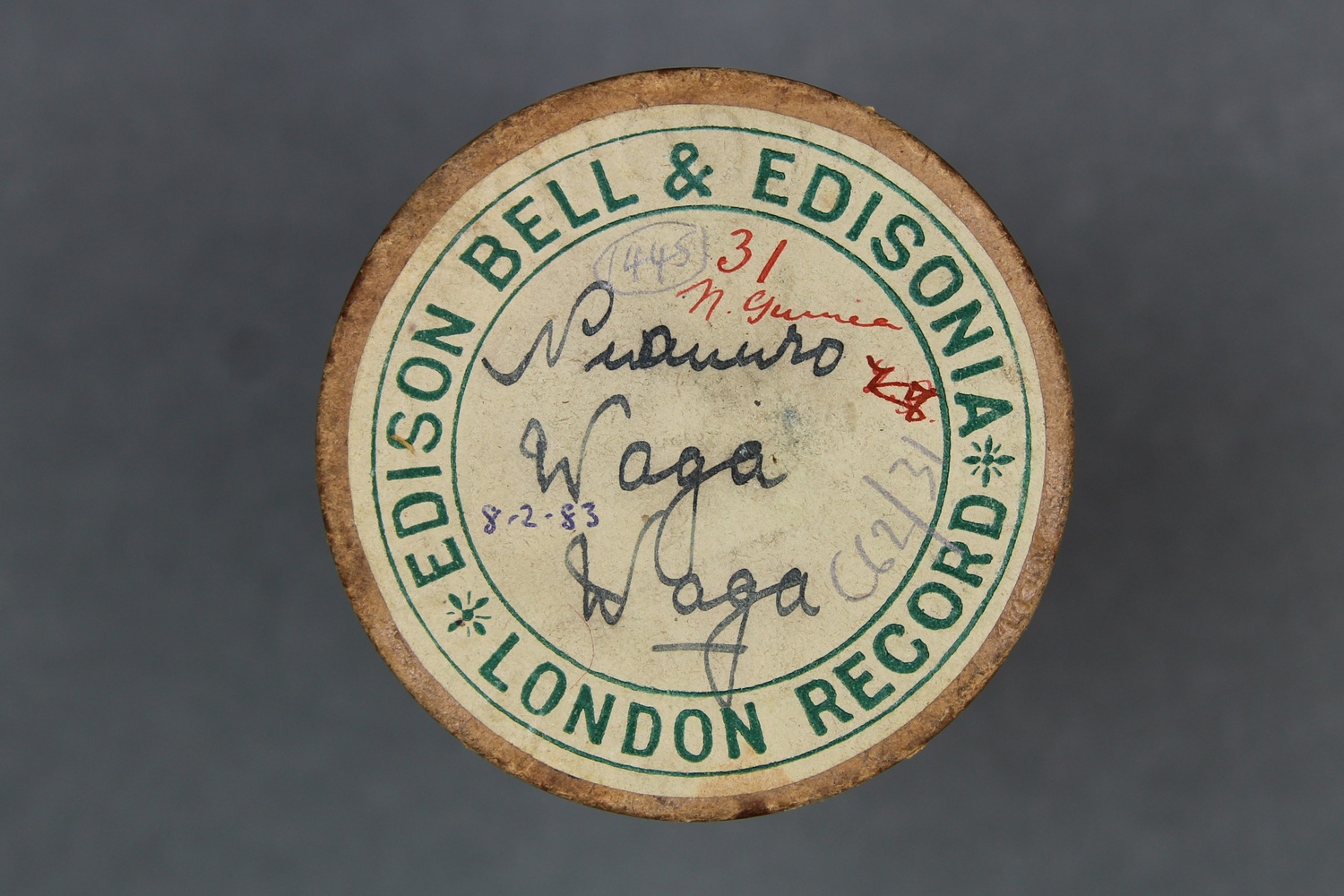      | This song is transcribed in Charles G. Seligmann, 'The Melanesians of British New Guinea', Cambridge University Press, 1910:587. | ||||||
| C62/1446 | Oge Oge Waga Waga | Unidentified (singer, male) | Waga Waga, Milne Bay, British New Guinea | October 1904 | 1. Announcement: "Oge Oge, a Waga Waga song." 2. Unaccompanied male vocal solo. A song whose meaning is not known. | Good quality recording. | Wagawaga | Field recordings | Seligman, Charles Gabriel | 3'22" | Daniels Ethnographical Expedition to New Guinea 1904 | Brown wax cylinder | Daniels Ethnographical Expedition to New Guinea 1904 Cylinder Collection (C62) | British Library | 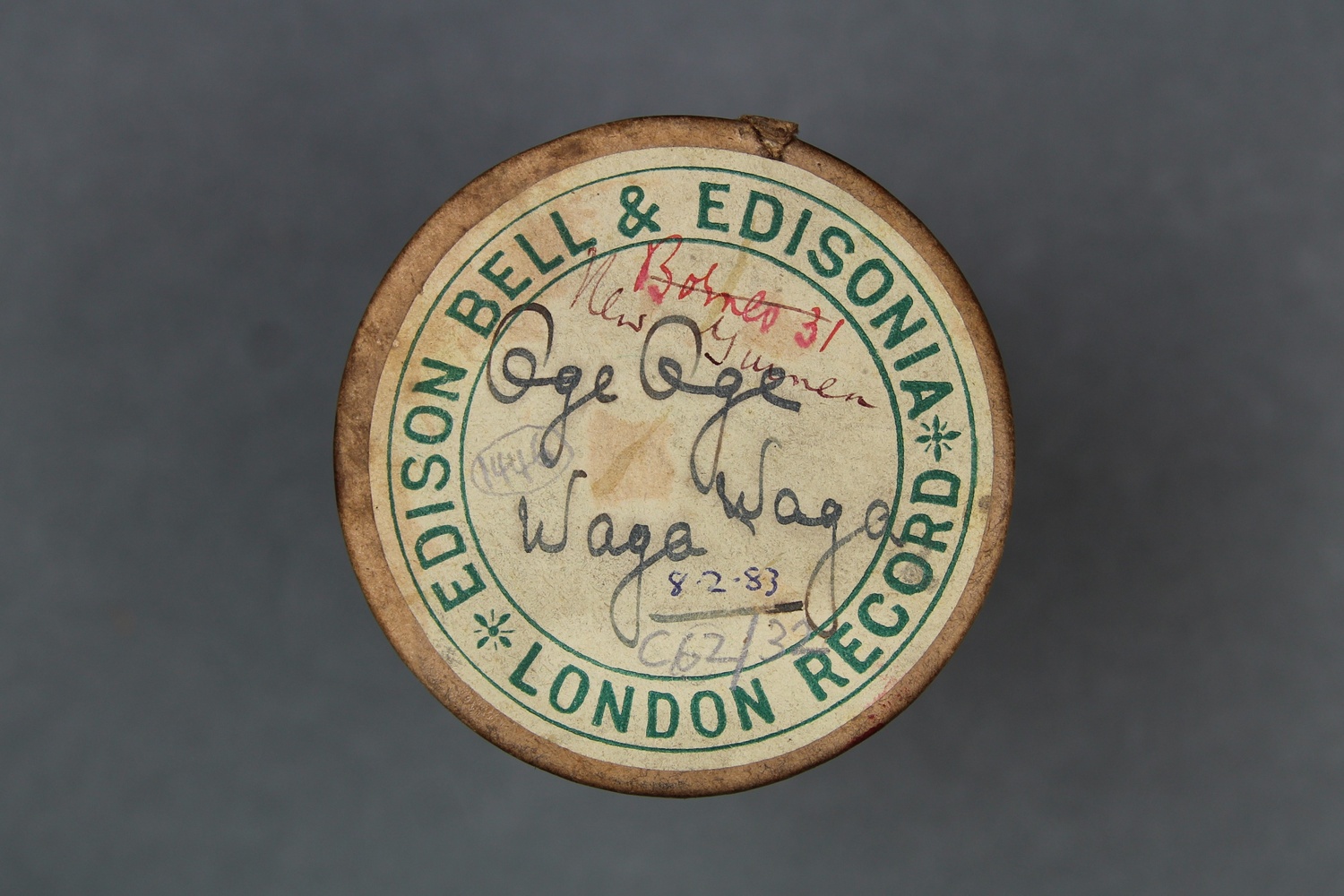      | This song is transcribed in Charles G. Seligmann, 'The Melanesians of British New Guinea', Cambridge University Press, 1910:587. | ||||||
| C62/1447 | Pediri Waga Waga | Unidentified (singer, male) | Waga Waga, Milne Bay, British New Guinea | October 1904 | 1. Announcement: "Pediri, a Waga Waga song.". 2. Unaccompanied male vocal solo. A song about a saling journey. | Reasonable quality recording but with surface noise. | Wagawaga | Field recordings | Seligman, Charles Gabriel | 2'28" | Daniels Ethnographical Expedition to New Guinea 1904 | Brown wax cylinder | Daniels Ethnographical Expedition to New Guinea 1904 Cylinder Collection (C62) | British Library | 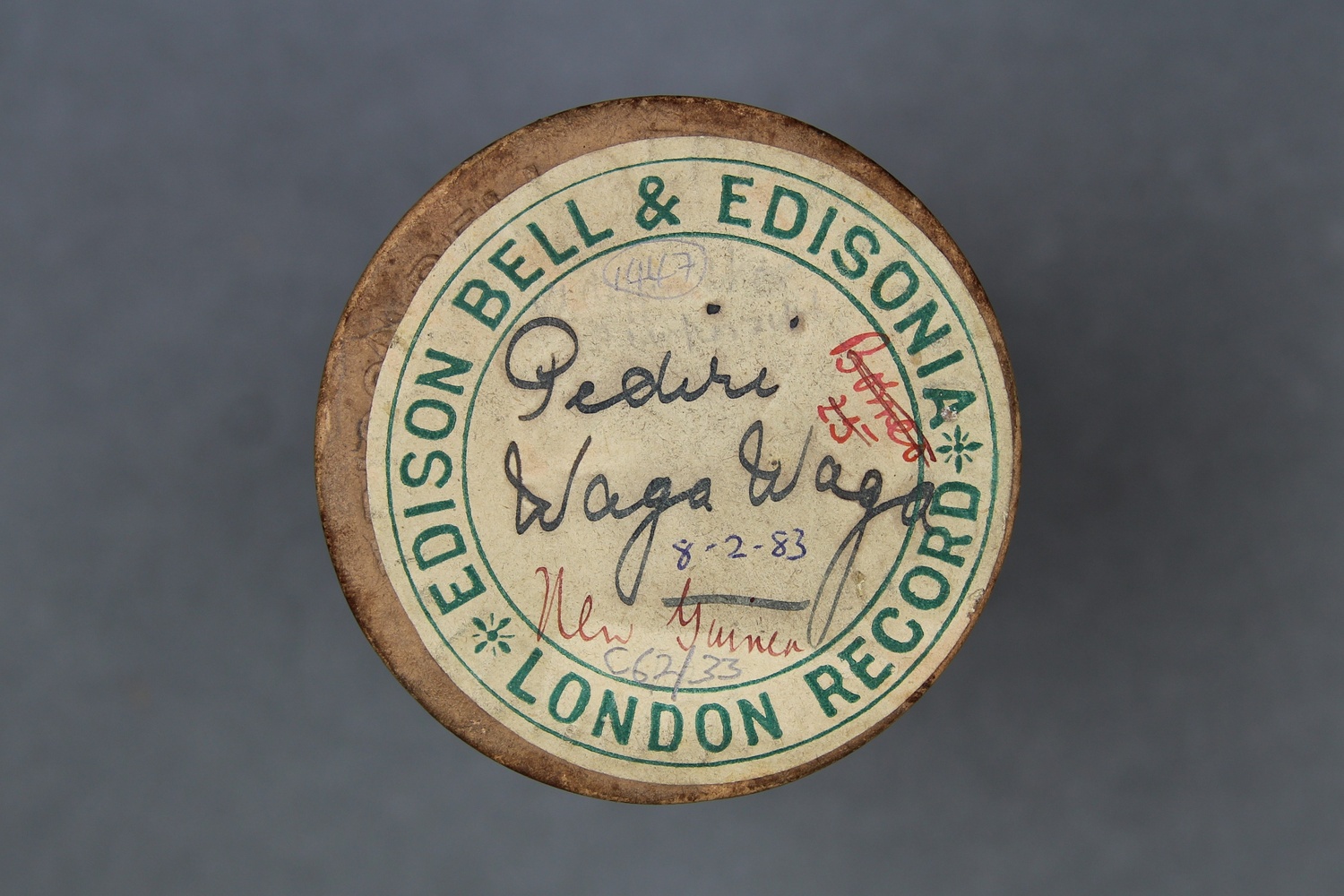      | This song is transcribed in Charles G. Seligmann, 'The Melanesians of British New Guinea', Cambridge University Press, 1910:586-587. | ||||||
| C62/1450 | Nuauuro B | Unidentified (singer, male) | Waga Waga, Milne Bay, British New Guinea | October 1904 | 1. Announcement: "Nuauro, a Waga Waga song." 2. Unaccompanied male vocal solo. The second part of the Nuauuro song. | Reasonable quality recording but with weak signal and surface noise. | Wagawaga | Field recordings | Seligman, Charles Gabriel | 3'26" | Daniels Ethnographical Expedition to New Guinea 1904 | Brown wax cylinder | Daniels Ethnographical Expedition to New Guinea 1904 Cylinder Collection (C62) | British Library | 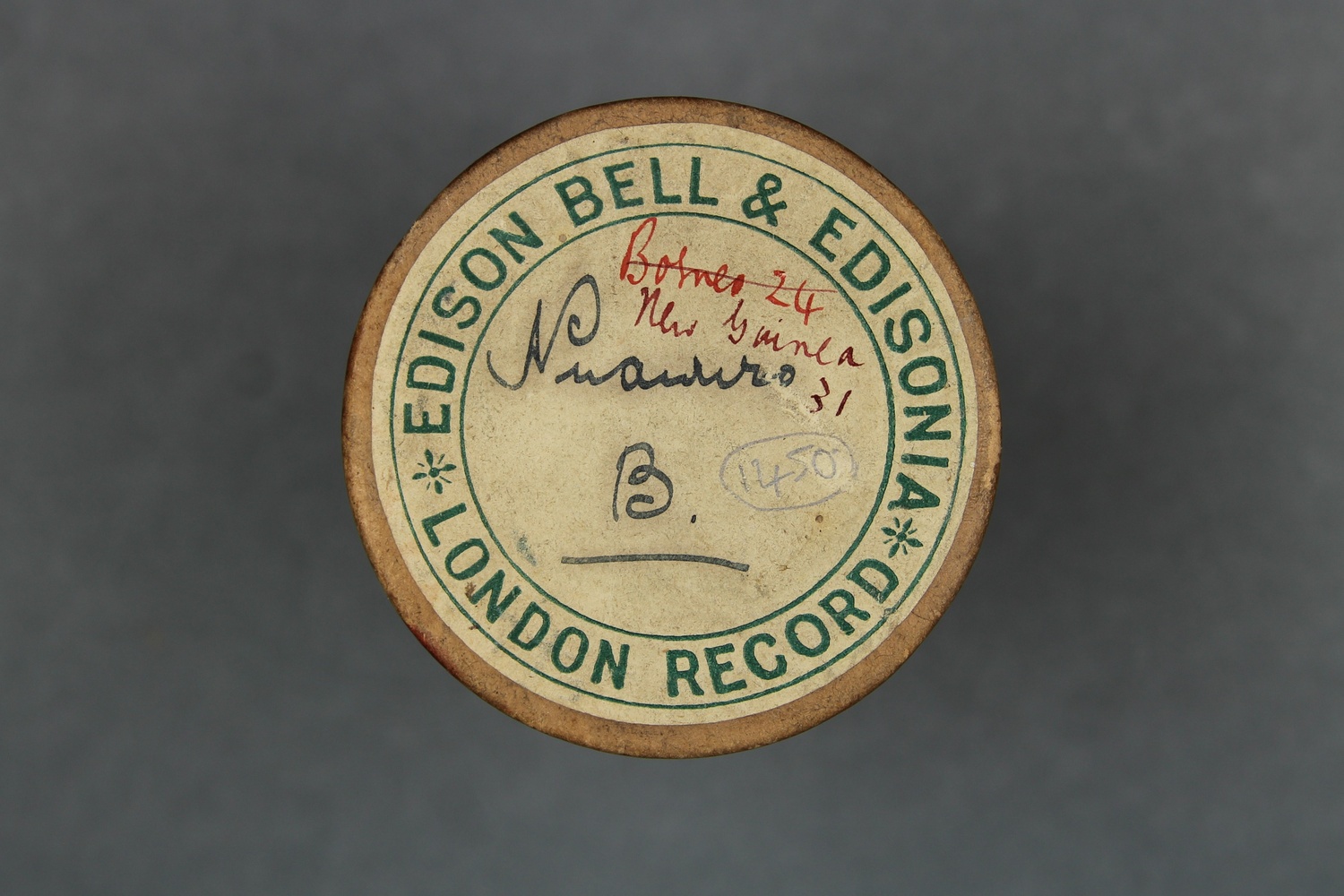      | This song is transcribed in Charles G. Seligmann, 'The Melanesians of British New Guinea', Cambridge University Press, 1910:587. |
Other Motu/Koita
Seligmann noted, of Koita songs, “The origin of most of the songs is utterly obscure, and the words for the most part unintelligible” (1910:152).
First is the C62/1415 Waura Koita. This cylinder and C62/1416 Poru Koita have the performer named as Kabur. Seligmann noted that vaura was a class of song in Koita that included “vaura, vaurabada, gerukome, konedoi sung at dances and feasts especially at the tabu feast” (1910:152). He included transcriptions of five songs belonging to the vaura group; it is not clear whether any of these are the track recorded.
“Vaura. My informants could attach no meaning to the following songs belonging to the vaura group; they were said to have come from the East, but whether up the coast or inland, was quite uncertain. It is said that the words of which they consist are not Koita and do not even resemble that language.
Gerukome
Gerukome koma yoweyauwa pasiyauwa reye gerukome
Gerukome kome obukome obukome kome yewaauwa madoreauwa beyo
Obukome obukome kome.
Vaura
1. Vaura kira verewaiori kekevakira gamunaivori
Vereuenagi bonaruago nekwatunagi bonoritago
Ruago ritago.
2. Guninagoia mairigimo gimo sebamu gosi gosi guninagoia sinaugurena
Gabamureva sebamutura beriegaba weawagitu nomurabia
Gaba nonibene vanigumiro
3. Mainoseri varoyagara gemugarai
Gedumukapa varinagewa boromatugu
Botauguya yawaguyo tagunabeva
4. Vanigemu geguyamore vanigemu yegusiago
Diroyabora turoguyamu taborokuni mataguvamo
Yaunebari yaunebari
Kipiriporu porutaia iregas kaparaporu
Porutaia irorae kipiriporuta
Kaparaporuta namanagoroaiya kerukeke raiyano kekeraitano
Maisi maiteuwa rawauenaia maiteuwa
Maiteu raukere rokaia yainu ovenio
Marere maiteu rauhero rohaia kouko venio marere.”
(Seligmann 1910:153)
C62/1416 Poru Koita may be one of the vaura songs noted above; it was not noted as a separate category of song. This cylinder and C62/1415 Waura Koita have the performer named as Kabur.
C62/1417 Berasi Koita is presumably one of the songs from the berasi class of song; these are “songs sung while fencing gardens, also sung as dirges” (Seligmann 1910:152). He transcribed three berasi songs; it is not clear which, if any, is documented in this recording.
“Berasi. The meaning of Iruregaio is entirely unknown; it goes: Iruregaiyo ninivaiyo wabu mageta reremo ro gaiyu sorure gaiyo ninivayo taitau mageta gosigorogaio.
The following song Irimabera is sung when fencing a garden, but only when the singer or singers have passed the preceding night with a girl. When sung as a dirge it does not imply recent cohabitation. With each word is given what was stated to be its meaning in the song; iri is the Koita sunblind, made of dried banana leaves which makes a comfortable mattress.
Irimabera yaganuyo irigaitabu yaganuyo
(on an) iri we sleep (on) another iri we sleep
noikeginuegore irimabera yaganuyo
we with somebody (on an) iri we sleep
153.
noikedobiegore gabumabera gatanuyo
we with girls (on a) bed of iri we sleep
gabugaitabu gatanuyo behi behi
(on) another pile we sleep we sleep in couples
yaganuyo irima behi yaganuyo
we sleep we sleep together on an iri we sleep
kaihu kaihu gatanuy gabuma kaihu
we sleep in couples we sleep we sleep together
gatanuyo
we sleep.
Another berasi song, ogonimabia, was made by a Yawai boy, who on his return from an assignation with a girl of Ogoni village was overtaken by a storm.
Ogonimabia waimagatege enemagaraia
an Ogoni girl sent a message (to) a young Venehako man
Ogoniguma mairigaio goromorogaio
road from Ogoni go by that road rain fell
rauraveni goromorogaio dobigorogaio
the south-easterly rain rain falls rain falls heavily
orotoveni bobigorogaio
heavy rain a heavy rainfall”
(Seligmann 1910:152-153)
C62/1418 Ehona Lahato Koita and C62/1452 Ehona Koita were, according to their announcements, both “sung by Igo” or Igo Gow in Port Moresby in October 1904. Heather Donoghue pointed out that a Motu man called Igo travelled with the expedition in Central Province. He appears in two photos at the British Museum.6https://www.britishmuseum.org/collection/object/EA_Oc-B119-43 and https://www.britishmuseum.org/collection/object/EA_Oc-B119-52.
The ehona songs were “learnt from the Motu by the Koita, sung on lakatoi, also sung by the Motu as dirges” (Seligmann 1910:152). The cylinders C62/1438, C62/1439 and C62/1426, recorded in January, are also of this genre. One ehona song is transcribed in the Legend of the origin of the Hiri (Barton 1910:97-100) as the song sung by the Motu man Edai Siabo responsible for the first lagatoi. The words were:
Oalabada Oviria nanaia
Ario Visiu O Veri Auko
Bogebada Eraroia Nanaia
Irope Umanai Ela Dauko
(Barton 1910:99)
| British Library shelfmark | Recording title | Performer name | Recording location | Recording date | Content description | Performer description | Recording notes | Languages | Genre | Recordist | Recording length | Recording trip | Description of cylinder | Collection title | Cylinder location | Images of cylinder containers / documentation | Related print publication: | Related print publication: | Related print publication: | Related print publication: | Related print publication: | Related print publication: |
|---|---|---|---|---|---|---|---|---|---|---|---|---|---|---|---|---|---|---|---|---|---|---|
| C62/1415 | Waura Koita | Kabur (singer, male) | Port Moresby, British New Guinea | October 1904 | 1. Announcement: "Waura, a Koita song, sung by Kabur[?], Port Moresby, October 1904." 1. Unaccompanied male vocal solo. A song sung at dances and feasts. | Reasonable quality recording but with surface noise. | Koitabu | Field recordings | Seligman, Charles Gabriel | 3'40" | Daniels Ethnographical Expedition to New Guinea 1904 | Brown wax cylinder | Daniels Ethnographical Expedition to New Guinea 1904 Cylinder Collection (C62) | British Library | 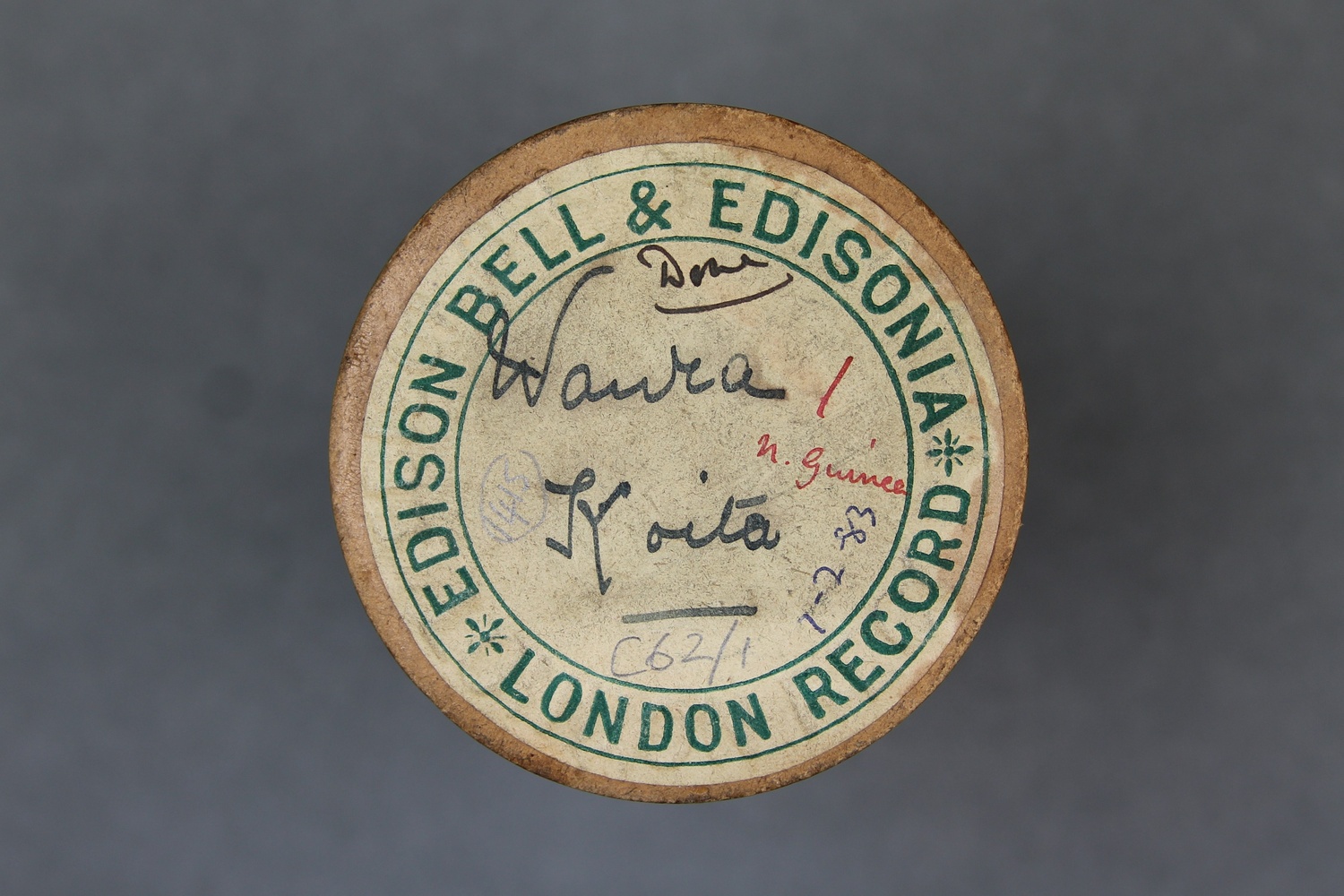 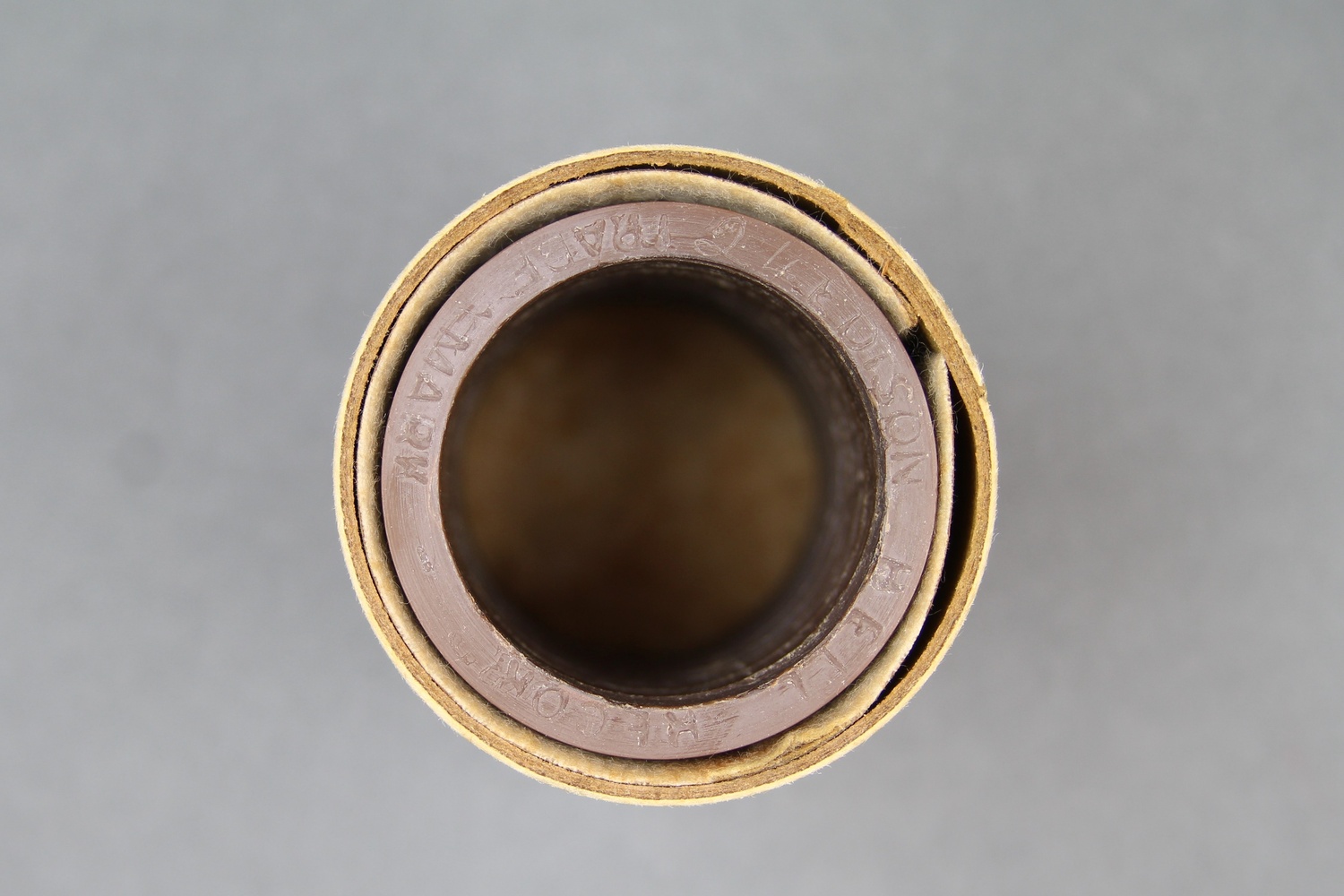     | This song is discussed and may be transcribed in Charles G. Seligmann, 'The Melanesians of British New Guinea', Cambridge University Press, 1910:151-152. | ||||||
| C62/1416 | Poru Koita | Kabur (singer, male) | Port Moresby, British New Guinea | October 1904 | 1. Announcement: "Poru, a Koita song, sung by Kabur[?] October 1904, Port Moresby." 2. Male vocal solo with percussion accompaniment. | Good quality recording but with some surface noise. | Koitabu | Field recordings | Seligman, Charles Gabriel | 3'29" | Daniels Ethnographical Expedition to New Guinea 1904 | Brown wax cylinder | Daniels Ethnographical Expedition to New Guinea 1904 Cylinder Collection (C62) | British Library | 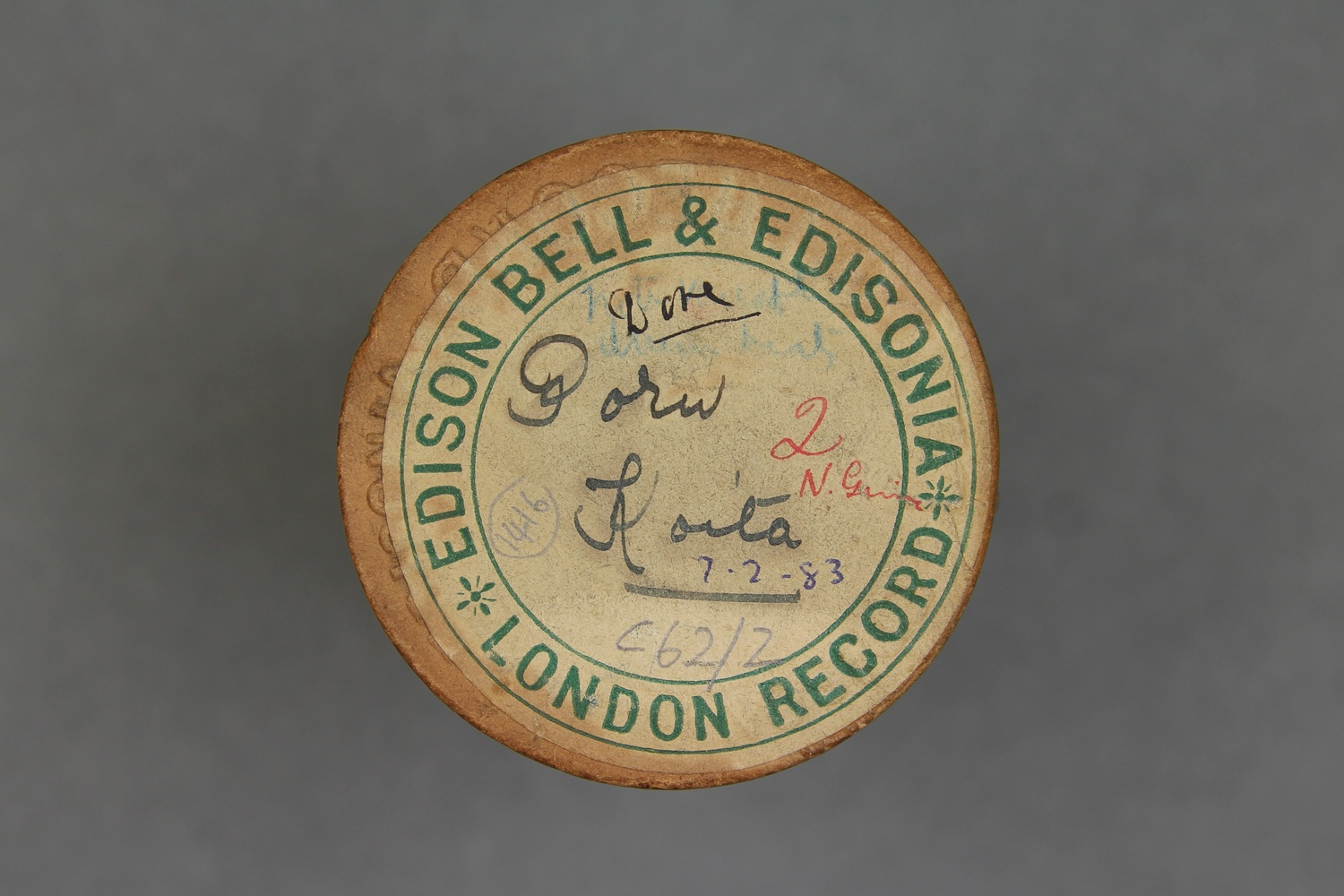      | This song may be discussed and transcribed in Charles G. Seligmann, 'The Melanesians of British New Guinea', Cambridge University Press, 1910:151-152. | ||||||
| C62/1417 | Berasi Koita | Unidentified (male chorus) | Port Moresby, British New Guinea | October 1904 | 1. Announcement: "Berasi - the Koita garden fencing song, sung at Port Moresby, October 1904." 2. Unaccompanied male vocal group. A song sung while fencing gardens; also a funeral dirge. | Good quality recording. | Koitabu | Field recordings; Garden fencing song | Seligman, Charles Gabriel | 3'51" | Daniels Ethnographical Expedition to New Guinea 1904 | Brown wax cylinder | Daniels Ethnographical Expedition to New Guinea 1904 Cylinder Collection (C62) | British Library |       | This song is discussed and may be transcribed in Charles G. Seligmann, 'The Melanesians of British New Guinea', Cambridge University Press, 1910:152-153. | ||||||
| C62/1418 | Ehona Lahato Koita | Igo Gow (singer, male) | Port Moresby, British New Guinea | October 1904 | 1. Announcement: "Lahato song, Ehona, sung by Igo Jow[?], Port Moresby, October 1904." 2. Unaccompanied male vocal solo. An ehona song. There are two photos of Igo Gow in the British Museum (Oc,B119.43 and Oc,B119.52). | Reasonable quality recording but with some distortion. | Koitabu or Motu | Field recordings; Trading song; Voyaging song | Seligman, Charles Gabriel | 3'43" | Daniels Ethnographical Expedition to New Guinea 1904 | Brown wax cylinder | Daniels Ethnographical Expedition to New Guinea 1904 Cylinder Collection (C62) | British Library | 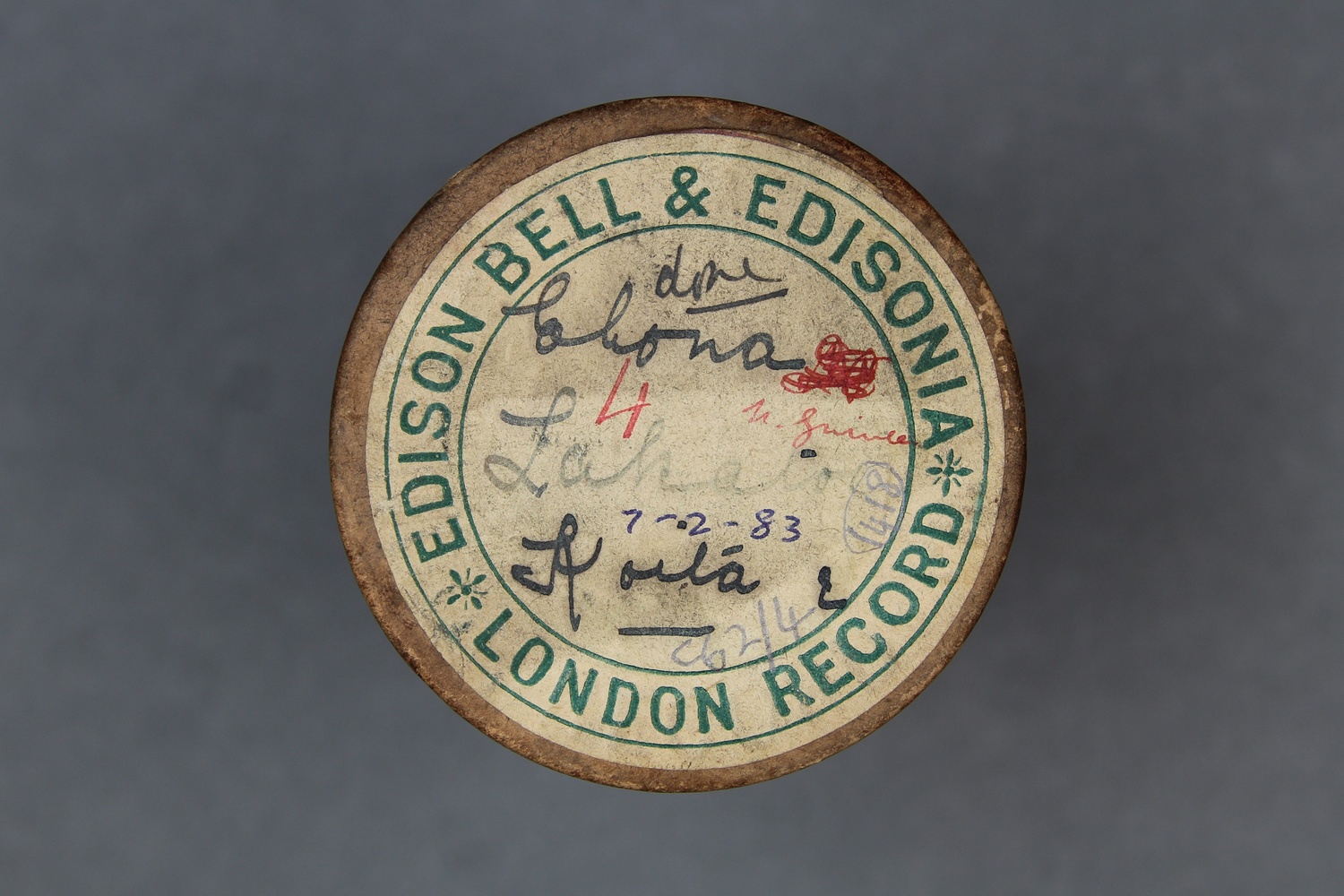      | This song may be discussed and transcribed in Charles G. Seligmann, 'The Melanesians of British New Guinea', Cambridge University Press, 1910:152. | ||||||
| C62/1424 | Hara Tabo Story | Ahuia Ova (narrator, male) | Port Moresby, British New Guinea | October 1904 | 1. Announcement: "The story of Hara Tabo, told by [indecipherable], Port Moresby, October 1904." 2. Unaccompanied male speech. | Good quality recording. | Koitabu | Field recordings; Speeches | Seligman, Charles Gabriel | 3'28" | Daniels Ethnographical Expedition to New Guinea 1904 | Brown wax cylinder | Daniels Ethnographical Expedition to New Guinea 1904 Cylinder Collection (C62) | British Library | 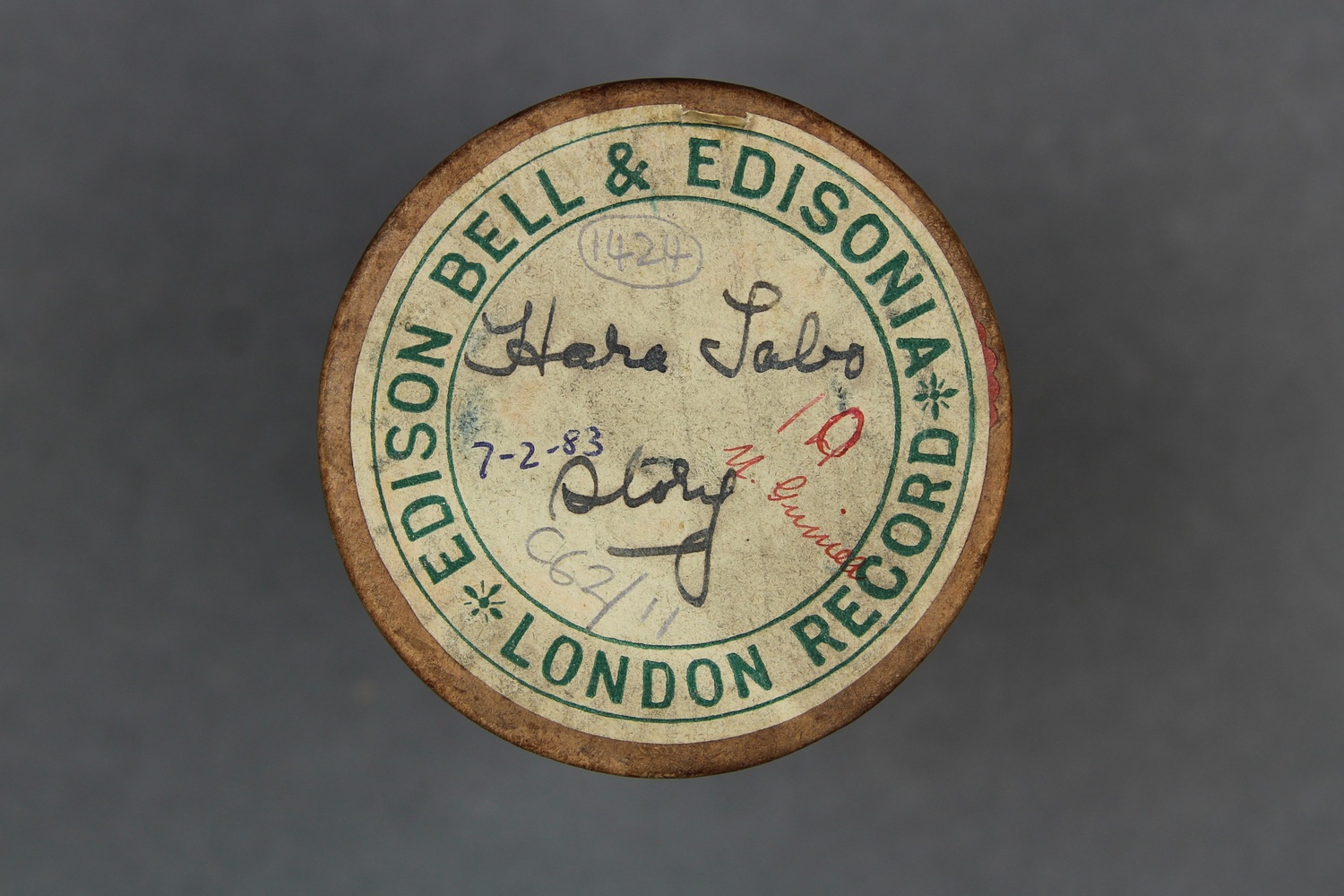      | This story is transcribed in Charles G. Seligmann, 'The Melanesians of British New Guinea', Cambridge University Press, 1910:183-185. | ||||||
| C62/1437 | Galo Galo. Motu | Unidentified (male chorus); unidentified (percussion) | Port Moresby, British New Guinea | October 1904 | 1. Announcement: "Galo Galo, a Motu song, sung when hauling captured dugung alongside the canoe, Hanuabada, October 1904." 2. Male vocal group with percussion accompaniment. Moto is presumably a typographical error and should read Motu. A dugong hunting song. | Good quality recording. | Motu | Field recordings; Dugong fishing song | Seligman, Charles Gabriel | 3'41" | Daniels Ethnographical Expedition to New Guinea 1904 | Brown wax cylinder | Daniels Ethnographical Expedition to New Guinea 1904 Cylinder Collection (C62) | British Library | 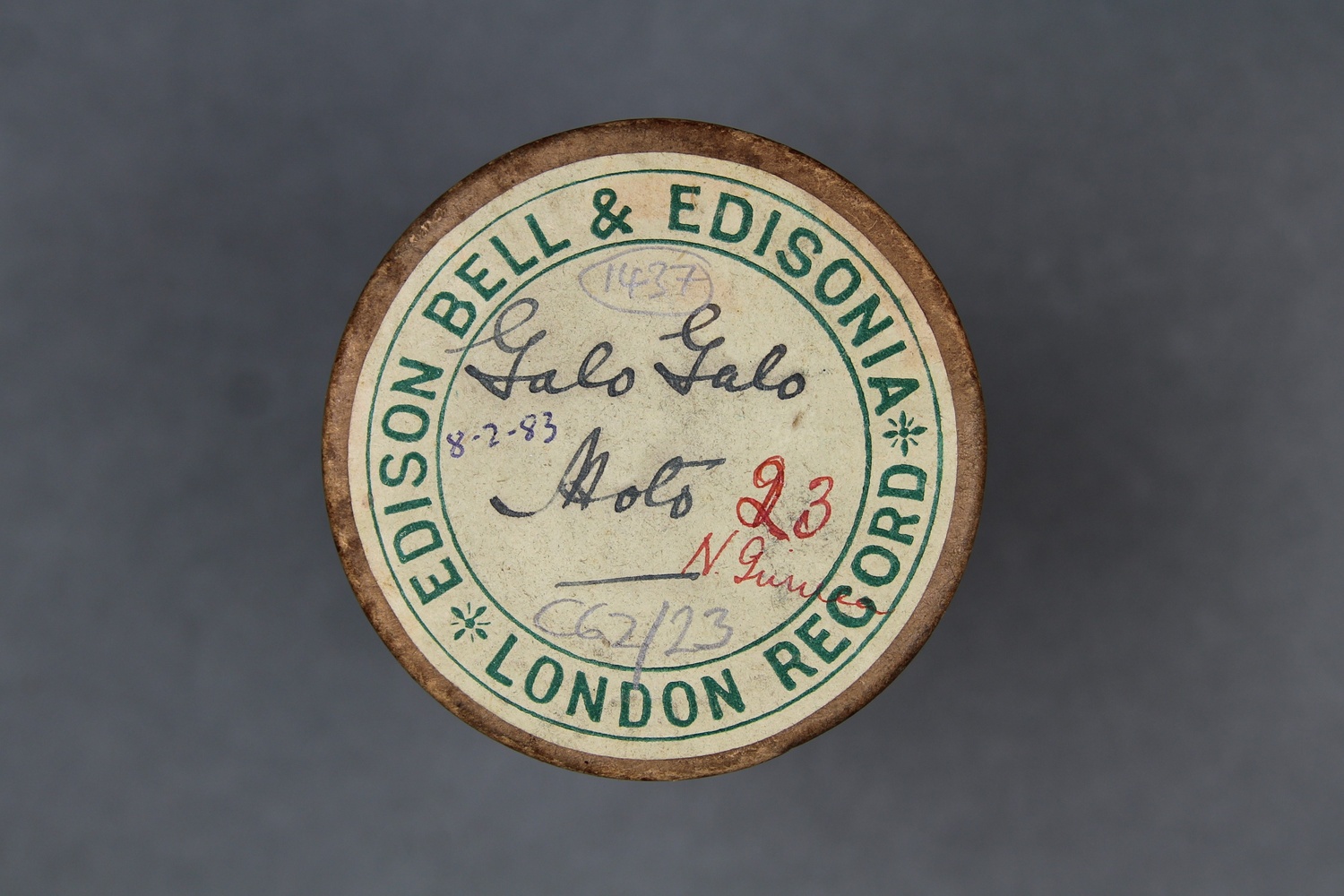      | |||||||
| C62/1451 | Various calls. Koita | Unidentified (singer, male) | Port Moresby, British New Guinea | October 1904 | 1. Announcement: "[indecipherable] calling to [indecipherable] to be brought to [indecipherable]. 2. Unaccompanied male vocal solo. 3. "Hunting call, returning to village after catching fish." 4. Unacc. male vocal solo. 5. Call given from [indecipherable], signalling return of Lakatoi." 6. Unacc. male vocal solo. 7. "Call from [indecipherable] for folk to come and take baskets containing yams and portions of fish." 8. Unaccompanied male vocal solo. Calls related to hunting, fishing and sailing. | Good quality recording. | Koitabu | Field recordings; Speeches | Seligman, Charles Gabriel | 3'34" | Daniels Ethnographical Expedition to New Guinea 1904 | Brown wax cylinder | Daniels Ethnographical Expedition to New Guinea 1904 Cylinder Collection (C62) | British Library | 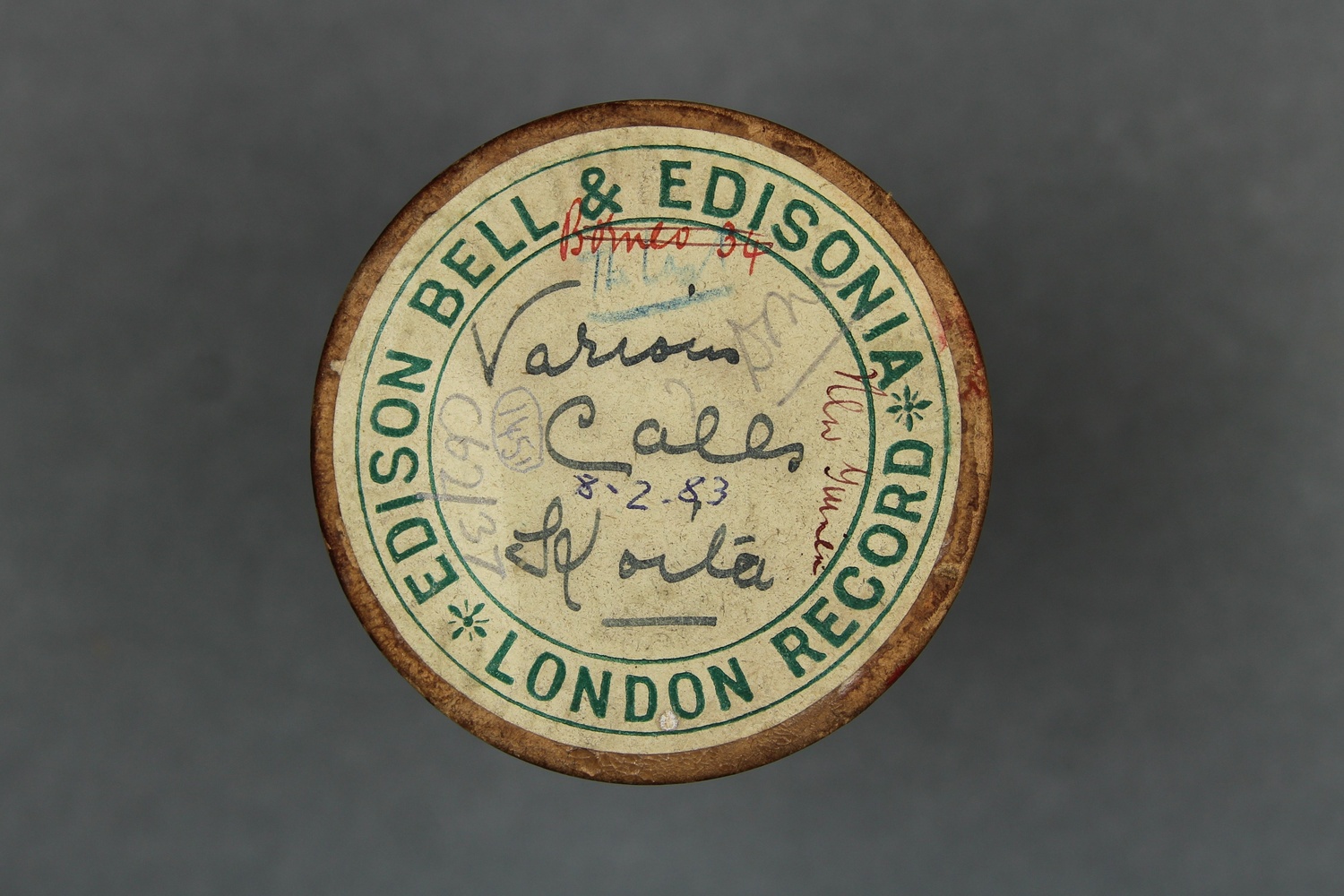      | |||||||
| C62/1452 | Ehona Koita | Igo Gow (singer, male) | Port Moresby, British New Guinea | October 1904 | 1. Announcement: "Ehona, a Koita and Motu dirge, sung by Igo[?], Port Moresby, October 1904." 2. Male vocal solo, accompanied by percussion. An ehona song. | Reasonable quality recording but with weak signal and some distortion. | Koitabu and/or Motu | Field recordings; Laments | Seligman, Charles Gabriel | 3'50" | Daniels Ethnographical Expedition to New Guinea 1904 | Brown wax cylinder | Daniels Ethnographical Expedition to New Guinea 1904 Cylinder Collection (C62) | British Library |       | This song may be discussed and transcribed in Charles G. Seligmann, 'The Melanesians of British New Guinea', Cambridge University Press, 1910:152. | There are two photos of Igo Gow in the British Museum (Oc,B119.43 and Oc,B119.52). |
- Anonymous. 1903. ‘The Daniels Ethnographical Expedition to New Guinea.’ The British Medical Journal 2, no. 2218 (4 July): 38. https://www.jstor.org/stable/20276997
- Barton, Francis Rickman. 1910. ‘The Annual Trading Expedition to the Papuan Gulf’ in C. G. Seligmann The Melanesians of British New Guinea, 96–120.
- Clayton, Martin. 1996. ‘Ethnographic Wax Cylinders at the British Library National Sound Archive: A Brief History and Description of the Collection.’ British Journal of Ethnomusicology 5: 67–92.
- Daniels, William Cooke. 1904. Major Daniels diary. Manuscript. SELIGMAN/3/1/1. London: London School of Economics Library.
- Dunlop, Ian. 1979. ‘Ethnographic Film-Making in Australia: The First Seventy Years (1898–1968).’ Aboriginal History 3/1–2: 111–119.
- Dutton, Tom E. 1970. ‘Notes on the Languages of the Rigo Area of the Central District of Papua.’ In Pacific Linguistic Studies in Honour of Arthur Capell, ed. S. A. Wurm and D. C. Laycock, 879–984. Pacific Linguistics, C 13. Canberra: Australian National University. doi.org/10.15144/PL-C13.879.
- Firth, Raymond. 1975. ‘Seligmann’s Contribution to Oceanic Anthropology.’ Oceania 45/4: 272–282.
- Groves, Murray. 1972. ‘Hiri.’ In Encyclopaedia of Papua and New Guinea, ed. Peter Ryan, 523–527. 2 volumes. Clayton, Vic.: Melbourne University Press.
- Haddon, Alfred Cort. 1900. ‘Studies in the Anthropogeography of British New Guinea.’ The Geographical Journal 16/3: 265–291, 414–440.
- Haddon, Alfred Cort. 1934. ‘Appreciation’ in E. Evans Pritchard et al (eds) Essays Presented to C. G. Seligman. London: K. Paul, Trench, Trubner & Co.
- Kolia, John. 1975. ‘A Balawaia Grammar Sketch and Vocabulary.’ In Studies in Languages of Central and South-East Papua, ed. Tom E. Dutton, 107–226. Pacific Linguistics, C 19. Canberra: Australian National University.
- Kolia, John. 1981. ‘The Lala and Balawaia in Central Province.’ In Oral Tradition in Melanesia, ed. Donald Denoon and Roderic Lacey, 231–39. Port Moresby: University of Papua New Guinea & Institute of Papua New Guinea Studies.
- Malinowski, Bronislaw. 1922. Argonauts of the Western Pacific: An Account of Native Enterprise and Adventure in the Archipelagoes of Melanesian New Guinea. London: Routledge. https://doi.org/10.4324/9780203421260
- Moyle, Alice. 1983. ‘Archaeomusicological Possibilities in Australia, Torres Strait and New Guinea.’ Bikmaus 4/3: 131–135.
- Seligmann, Charles Gabriel. 1903-1904. New Guinea journal. Manuscript. SELIGMAN/1/2/2. London: London School of Economics Library.
- Seligmann, Charles Gabriel. 1904. ‘Note Concerning the Progress of the Cook-Daniels Expedition to New Guinea and the Solomon Islands.’ Man 4: 180–181.
- Seligmann Charles Gabriel. 1905. ‘Further Note on the Progress of the Cook-Daniels Expedition to New Guinea.’ Man 5: 52–53.
- Seligmann, Charles Gabriel. 1909. A Classification of the Natives of British New Guinea. The Journal of the Royal Anthropological Institute of Great Britain and Ireland 39 (Jan–Jun): 246–275, 314–333.
- Seligmann, Charles Gabriel. 1910. The Melanesians of British New Guinea. Cambridge University Press.
- Seligmann Charles Gabriel, and Walter Mersh Strong. 1906a. ‘Anthropogeographical Investigations in British New Guinea.’ The Geographical Journal 27/3 (March): 225–242.
- Seligmann, Charles Gabriel, and Walter Mersh Strong. 1906b. ‘Anthropogeographical Investigations in British New Guinea (Continued).’ The Geographical Journal 27/4 (April): 347–365.
- Ward, Alan. 1984. ‘The Frazer Collection of Wax Cylinders: An Introduction.’ Recorded Sound 85: 1–11.
- Ward, Marion W. 1970. ‘The Rigo Road: A study of the economic effects of new road construction.’ New Guinea Research Unit ANU, Canberra: Allans Printers.

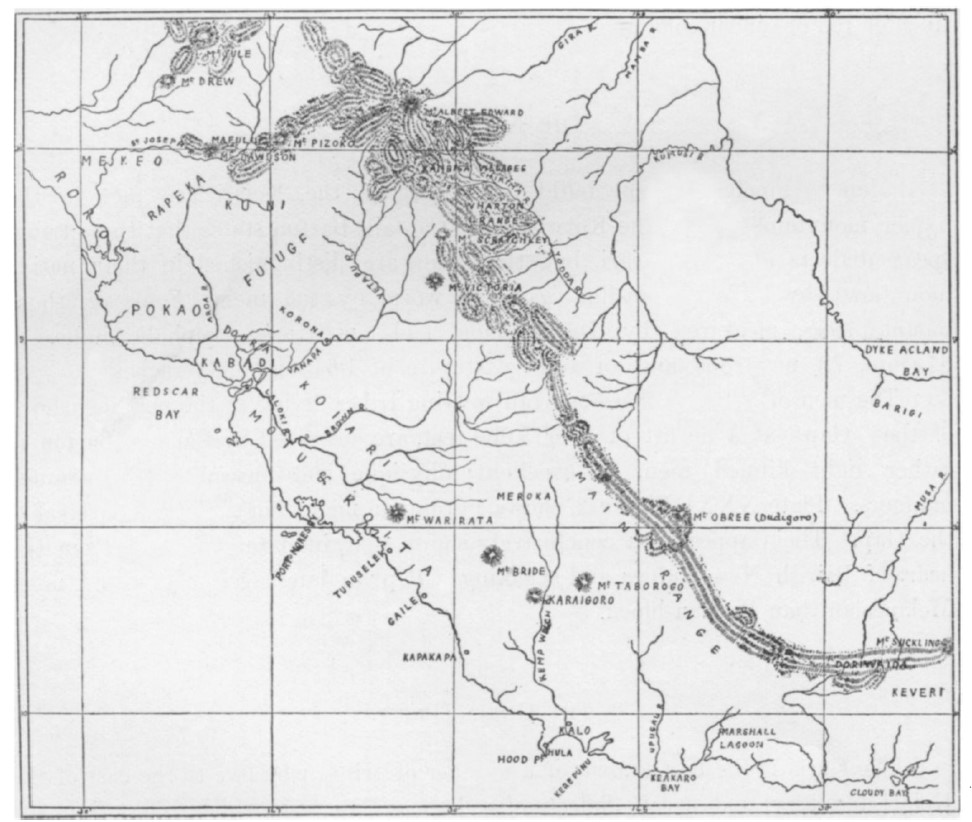

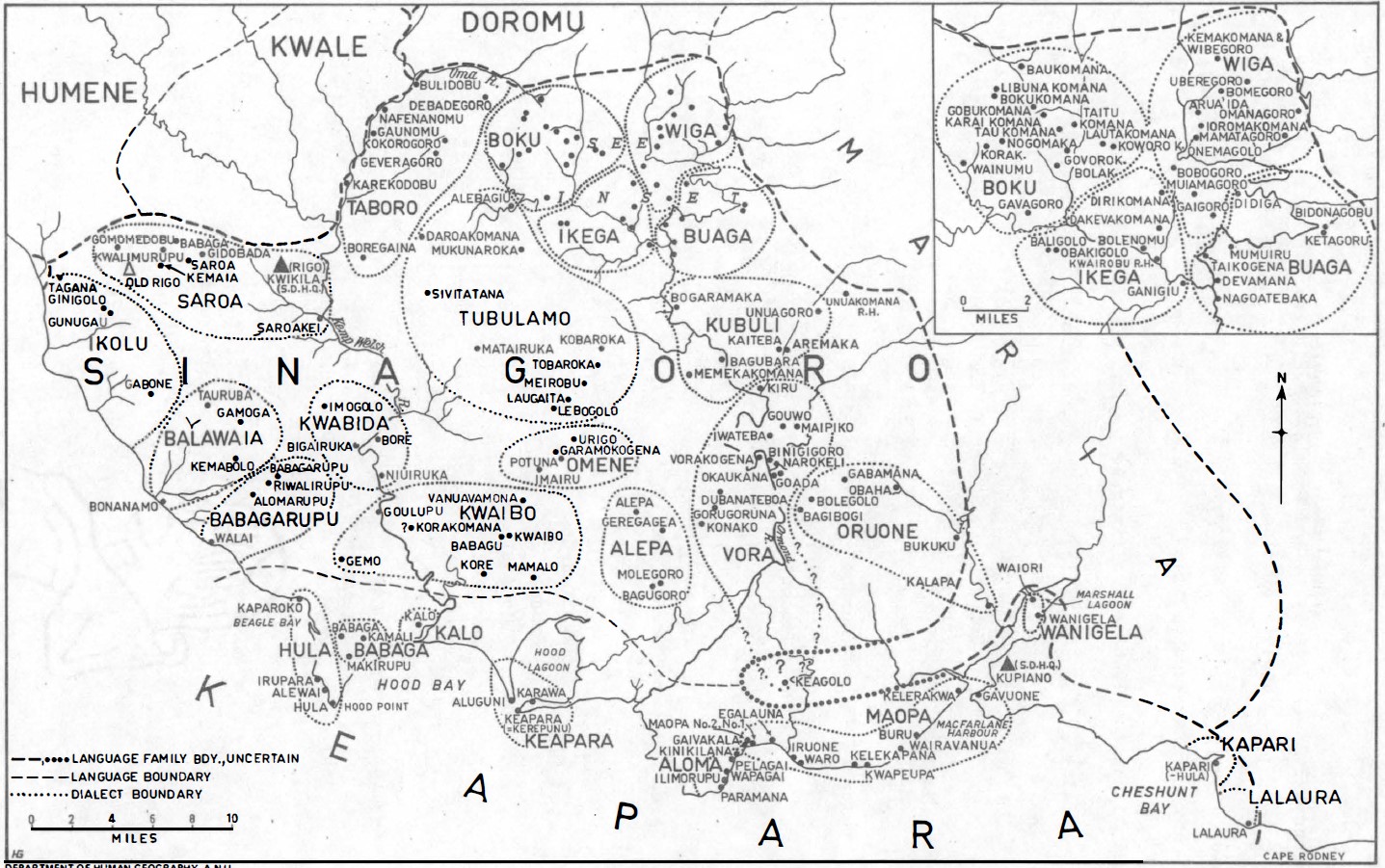


Can I also have Excess to my MONUMBO First Recordings??